Capsize Recovery: How to Recover a Capsized Sailboat
If you didn’t already know, capsizing refers to the overturning of our boat in the water. And unfortunately, it’s one of the leading causes of boating injuries and fatalities. There are many reasons why your sailboat might capsize. Overloading, improper anchoring, unsafe boat handling, and inclement weather, to name a few. But is it possible to prevent it from happening? And if it does, can you recover a capsized sailboat? Keep reading to learn how to recover a capsized sailboat, prevention tips, and disaster instructions.

What to Do If Your Boat is Capsizing
Capsizing is an incredibly dangerous (and equally frightening) experience. When it’s happening, it’s hard to think clearly. However, you can follow these steps to ensure the safety of yourself and your crew: 1. Wear Lifejackets Every passenger needs to have access to a lifejacket or PDF . Before the boat fully overturns, try to distribute improvised floatation gear (like seat cushions). 2. Account for Your Passengers Once in the water, visually and/or verbally account for all your passengers. Check for physical injuries, and make sure everyone has the proper safety equipment. 3. Find Help The next step is to look for help. If there are boats nearby, try flagging them down. If not, you might be tempted to swim to shore. If you’re further than 50 meters away, we strongly advise you to resist the urge. In those circumstances, you are safest staying with the boat. Try righting it, or you could climb onto the overturned hull to conserve energy (and escape the cold water). 4. Recover the Capsized Sailboat Use the traditional or scoop method to right your capsized sailboat if you’re able. Unsure how to do that? Don’t worry; we have detailed instructions down below. 5. Use a Distress Signal if Necessary If you are struggling to find help, you can use a distress signal. Most boats are equipped with distress flares, lights, and/or flags.
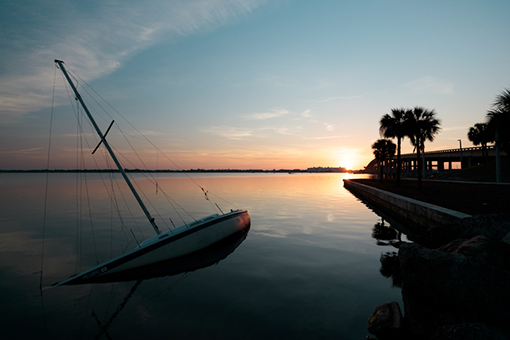
How to Recover a Capsized Sailboat
Once the boat has flipped, most sailors will attempt a sailing capsize recovery. While there are several different ways you could go about this, here are our top recommendations: The Traditional Method Hence the name; this method is the most common way to recover a capsized boat. Begin by positioning the boat, so the mast is downwind (meaning the bow is pointed into the wind). Then, have one crewman stand on the centerboard (ideally, this crewman should be the heaviest of the bunch). Next, they should use their leverage to work the boat back upright. If the boat is in a turtled position, the masthead is fully submerged beneath the water. It might take multiple crew members to right the boat. The Scoop Method The scoop method is another terrific option that can be used when multiple people are on board. It involves the lighter crew member swimming to the boat’s leeward side, lying in the bilge, and hugging one of the cockpit’s fixtures. Then, the heavier boater will stand up on the part of the centerboard nearest to the hull. As the heavier boater stands, the boat will be pulled upright. The lighter boater will be scooped aboard, and their weight will prevent the boat from re-capsizing. Note: To properly perform the scoop method, release the mainsheet and jib sheets. This allows the mainsail to wave loosely once the boat is righted. The Walkover Method The walkover method is slightly different from the rest, as it is performed while the sailboat is actively capsizing. It requires the boaters to walk/climb over the opposite side of the boat toward the centerboard. The hope is that their redistribution of weight will prevent the capsize from continuing once it’s begun.
Read Next: How Sails Work - Sailing in Different Wind Conditions
How to Prevent Your Boat from Capsizing
Overloading your boat is one of the leading causes of capsizing. Therefore, capsize prevention can be as simple as respecting your boat’s weight limit and evenly distributing the weight. Overloaded or imbalanced boats sit lower in the water. Therefore, this puts them at greater risk of being overtaken by rough water or wakes. You should also avoid boating in bad weather whenever possible. While many boaters believe they’re untouchable, a sudden squall can tip even large boats. For this reason, you should be extra cautious if caught in an unexpected storm. Turn your boat at controlled speeds and steer the bow directly into any oncoming waves.
Final Thoughts
We hope this article provides insight into how to recover a capsized sailboat. If you’re interested in more boating safety articles and how-to guides, check out our resources page .
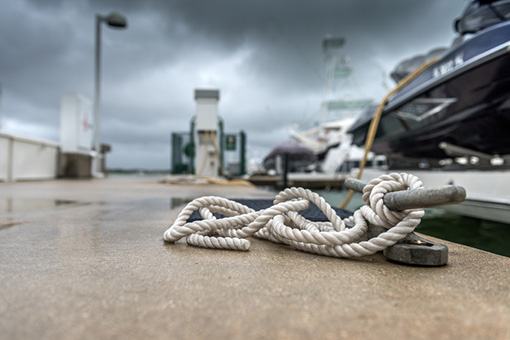
Join Our Newsletter!
Get community news, buying bargains, and how-to guides at your fingertips.
Tacking and jibing a catamaran
Catamarans tend to tack and jibe more slowly than monohull dinghies , but provide better stability. This is particularly noticeable when jibing, which is comparatively easy to control. The technique for both maneuvers is very different from a center mainsheet dinghy .
TACKING TIPS
In a catamaran, the helmsman should steer into the tack with the rig powered up and the boat sailing at speed. Steer carefully through the tack; be aware that slamming the rudders over can make them act as brakes. Both crew should stay on the windward side until the jib has

As you start to tack, keep the jib backed in order to help turn the bows, as catamarans are often slow to turn through the wind. Highperformance catamarans with daggerboards can pivot more quickly through the turn.

The helmsman faces aft as he crosses the boat, easing the mainsheet before ducking underthe boom. The crew watches the mainsail carefully, waiting until the mainsail has filled on the new side.
backed. This will help to lift the leeward hull, so that the catamaran pivots on the inside hull. Keep both the mainsheet and jib sheet pulled in tight until the jib starts to back and the bows bear away on the new tack. The helmsman should face aft while moving across the boat, easing the mainsheet to help "pop" the battens into their new position and accelerate the catamaran on to the new tack.
Crossing the eye of the wind to windward is similar for catamarans and dinghies, but usually you are tacking from a close reach instead of a close hauled course.

When the mainsail has filled on the new side, the crew pulls in the jib on that side. The helmsman and crew take up their new positions, ready to accelerate on the new tack before luffing to the new close reaching course.
TACKING AND JIBING A CATAMARAN 147
JiBiNG Tips
Catamarans are easier to jibe than monohull dinghies because they are more stable, and are unlikely to capsize when both hulls are on the water. As with any sailing boat, jibing becomes more challenging in stronger winds. Be aware that if you steer a catamaran into a jibe at high speed and then slow right down, the apparent wind will swing behind the boat and power up the rig midway through the jibe. Keeping the boat at a steady speed throughout the turn is the surest way to maintain control. As with tacking, the helmsman should steer carefully and progressively through the maneuver to avoid turning the rudders into brakes and halting part way through the turn.
Crossing the eye of the wind on to a downwind course you are usually jibing from broad reach to broad reach.

Ithe catamaran is at maximum speed as it bears away into the jibe. In light winds especially, the crew weight should be kept forward so the sterns do not dig into the water and slow the boat.

2 the helmsman faces aft while the crew faces forward as they cross the trampoline. At the right moment, the helmsman must flip the tiller extension past the boom end, on to the new side.
4 Once the mainsail has jibed, the helmsman straightens the rudders to prevent the bows turning too far into the wind. In lighter winds, it may be necessary to "pump" the boom so the full length battens curve the right way.
3 the helmsman takes hold of the falls of the mainsheet to pull the mainsail over to complete the jibe, while at the same time steering through the downwind point on to the new course.

"we have salt in our blood, in our sweat, in our tears— we are tied to the ocean."
John Fitzgerald Kennedy

Catamaran capsize
When a catamaran capsizes, the crew need good technique in order to pull it up. This may include righting from a pitchpole or from total inversion.
A catamaran can capsize by being blown over sideways, or by driving the leeward bow into the water and "pitchpoling" (nosediving), as shown here. If you are out on the trapeze, try not to fall into the mainsail as this could break battens or push the boat upside down. Beware also of being thrown forward in a pitchpole, when the crew may swing around the bows as the boat suddenly decelerates. A catamaran floating on its side may be blown downwind faster than you can swim, so grab something as soon as you are in the water, to maintain contact. You can climb on to the lower hull of a capsized catamaran, or the underneath of the trampoline if it is upside down. Both are secure positions while you prepare to right.
PITCHPOLING
Catamarans have a tendency to dig the leeward bow into the water when unbalanced, resulting in a head-first capsize.
If the catamaran starts to invert, swim clear of the trampoline to ensure you are not trapped underneath the boat.
CATAMARAN CAPSIZE

If the catamaran is upside down, the crew should scramble onto the bottom hull, standing forward so that the bows swing around Into the wind. The boat will then be under control as It rights.
2 With both crew standingon the bottom hull, lead the righting line (normally in a pocket close to the mast base) overthe upper (windward) hull. Pull to lift the windward bow, helping the rig float to the surface.

3 Make sure all sheets are uncleated and pull again on the righting line to lift the rig out of the water. Once the wind can blow under the rig, giving additional lifting power, righting should be easy.
4 A lightweight crew may have insufficient leverage to lift the rig. One solution is for the crew to "piggyback" on the helmsman. If that does not work, a rescue boat may be needed to help lift the mast.

5 The catamaran will accelerate as it rolls upright. Both crew should drop into the water by the front beam, ready to hold the boat steady as the hull comes down, and prevent another capsize.
6 Climb back on board from the side. Climbing over the front beam can be difficult; clambering over the rear beam risks bruises or, more seriously, a bent tiller bar.

Continue reading here: Dinghy racing
Was this article helpful?
Recommended Programs

Myboatplans 518 Boat Plans
Related Posts
- Sailing a catamaran - Sailing Techniques
- Catamaran Design Guide - Catamarans Guide
- How to tack - Sailing Procedures
- Jibing a dinghy - Sailing Techniques
- Introduction to catamarans
Readers' Questions
How do i turn my catamaran faster?
There are several ways you can potentially make your catamaran turn faster: Adjust the sail trim: Properly adjusting the sail trim can significantly affect the speed and maneuverability of your catamaran. Experiment with different sail settings, such as trimming the sails in more, letting them out slightly, or adjusting the angle of attack. This can help optimize your boat's performance in different wind conditions. Move crew weight: Shifting the weight of crew members can impact the catamaran's balance and stability, affecting its maneuverability. Refine your weight distribution, moving crew members and gear to improve the boat's ability to turn. For example, moving crew weight to the leeward side during turns can improve the boat's stability and responsiveness. Use the rudders effectively: The rudders are vital for controlling the direction and turning of the catamaran. Utilize your rudders strategically by applying slight pressure or adjustments to steer the boat more efficiently through turns. Practice using the rudders to initiate turns at the right time and angle to maximize performance. Optimize your route: Planning your route effectively can help you take advantage of wind shifts and currents to enhance your catamaran's turning ability. Analyze the wind patterns and choose your course wisely to achieve better angles during turns. Practice maneuvering techniques: Regularly practicing various maneuvering techniques can help you develop a better understanding of your catamaran's capabilities and improve your turning skills. This may include practicing tacking and gybing, mastering the timing and coordination required for smooth turns. Remember, every catamaran is unique, so it may require some experimentation and experience to determine the best techniques for maximizing your boat's turning ability. Safety should always be a priority, so ensure you have the necessary skills and knowledge before pushing the limits of your catamaran.
How to tack a catamaran dinghy?
Prepare your catamaran dinghy for tacking by taking out the rudder, mast, and sails. Stand in the center of the dinghy and prepare the sails for tacking by extending the spreader and headsail sheets out. Take one of the sheets in your hand and pull it tight while pushing the dinghy against the wind. Maintain the tension on the sheet and gradually start to turn the boat in the direction of the wind. At the same time, you want to shift your weight to the opposite side of the dinghy. Make sure to keep the sail full and to keep tension on the sheets. When the boat is about halfway through its tack, the sails should be 180° from their original angle. Make sure the sails remain full and finish the tack by allowing the sheets to be pulled tight. Once the tack is complete, make sure the dinghy is away from the wind, and you are ready to go.
How to successfully tack a catamaran?
Tacking a catamaran refers to changing the direction of the boat while sailing into the wind. Here are the steps to successfully tack a catamaran: Prepare the boat: Ensure that all equipment, sails, and rigging are in good condition and properly adjusted. Make sure you have a clear understanding of the boat's design and handling characteristics. Communication: If sailing with a crew, ensure proper communication and coordination between crew members. Assign roles and establish clear communication channels to avoid confusion during the tack. Determine wind direction: Observe the wind direction and identify the direction you want to sail toward. Prepare the sails: Ease the main sheet and release tension from the jib or jib sheets, allowing them to luff. Helm orientation: Steer the boat close-hauled, generally pointing at a 45-degree angle into the wind. Initiate the tack: To initiate the tack, turn the boat's bow through the wind to the opposite side. This should be done gradually to prevent excessive heeling or loss of control. Use the tiller or steering wheel to gradually turn the boat. Trim the jib: As the boat completes the turn and the sails start to fill on the opposite side, trim the jib sheet to tighten the jib. Trim the main sail: Once the sails are filled, trim the main sheet to achieve the desired sail trim for the new direction. Gradually tighten the sheet to prevent excessive heeling or overpowering the boat. Balance the boat: Make any necessary adjustments to maintain a balanced and controlled sailing position. Resume course: Once the tack is complete and the boat is on a new heading, resume sailing toward your desired direction. Remember, practice and experience play a significant role in successfully tacking a catamaran. It may take time to develop a feel for the boat's handling characteristics, so stay patient and keep practicing. Additionally, always prioritize safety by wearing appropriate safety gear and following boating regulations.
How to tack a catamaran?
Tacking a catamaran is very similar to tacking a monohull sailboat. When a boat is tacked, the sails change sides and the bow of the boat turns through the wind to the opposite side. On a catamaran this means clearing the leeward hull from the wind and pointing it so that it is heading evenly upwind. To do this, the jib sail is first eased and then sheeted in on the opposite side. The mainsail is then eased and trimmed to the other side. As the boat turns, the new leeward hull is pushed downwind and the windward hull is given larger angle of attack. Finally, the sails are trimmed to balance the boat.
Which is easier tacking or jibing?
Tacking is generally considered to be easier than jibing. Tacking involves changing direction by shifting the bow of the boat through the wind, while jibing involves changing direction by steering the stern of the boat through the wind. Jibing is often referred to as a "high-speed maneuver" and requires more control and skill to execute properly.
When to tack and jibe?
Tacking is when a boat turns its bow into the direction from which the wind is blowing. Jibing is when a boat turns its stern into the direction from which the wind is blowing.
How to jibe a catamaran?
To jibe a catamaran, start by making sure all sails are trimmed and secure. Make sure that the leeward hull is clear of any obstructions. Look back over your shoulder and as the stern of the boat swings around, pull the rudder towards you so that the boat turns into the wind. When the sail on the opposite side of the boat has filled, release the rudder and hold onto the boat's traveler, easing it to its original position. Finally, move the mainsheet to its original position.
Can you blow a catamaran over?
No, it is impossible to blow a catamaran over because its design is designed to be stable in the water. A catamaran's two hulls are wide and flat, which make them stable and resistant to tipping over.
How to right pitchpole catamaran?
To right a pitchpole catamaran, move the crew to the side of the boat that is facing up. Make sure that all crew members are facing in the same direction and ready to right the boat. Once the crew is in position, they should use their body weight to push the boat over while also swimming. With enough effort, the boat should eventually tip back over and begin to float again.
Can a Catamaran Capsize? The Surprising Answer
Capsizing often happens with small boats like canoes, kayaks, and sailboats. But even for bigger boats like catamarans, which have an established reputation for stability and safety, it's still normal to wonder if they can capsize too. To give you peace of mind and prepare you for the worst, let's answer that question in this article.
A catamaran can capsize under extreme conditions, just like any other boat. Even the most stable catamaran can capsize if it's hit by a large wave, caught in a sudden gust of wind, or if the rotational force has overcome the stability of the boat. However, it's not something that happens frequently.
It can be a scary experience if a catamaran capsized, but you have to stay calm and know that most modern catamarans are designed to self-right. This means that they can turn themselves back over after capsizing. Let's continue reading to know what else can we do to recover from a catamaran capsize.
- A catamaran's stability is attributed to its center of gravity, its freeboard, and its pendulum-like behavior. However, despite its stability and speed, a catamaran can still capsize due to strong winds and capsizing waves.
- There are factors that can contribute to the likelihood of a capsize happening, such as wind speed, wave height, weather conditions, breaking waves, and the overall sailing conditions.
- The best thing to do to quickly recover from a capsize is to stay calm and position the boat to make it self-right quickly.
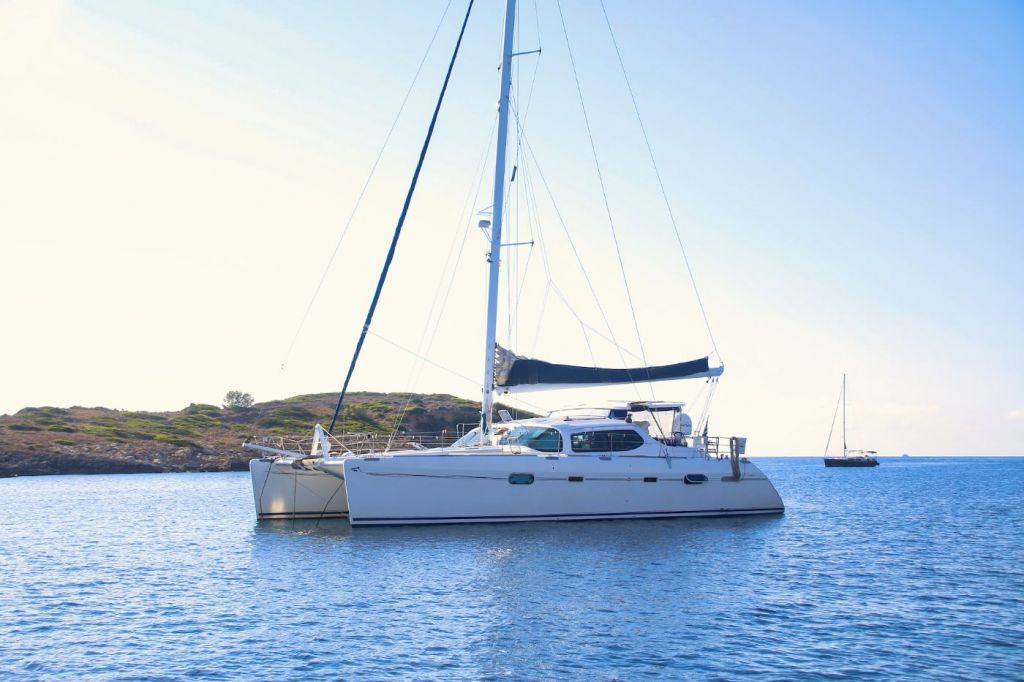
On this page:
A catamaran can capsize despite its stability, factors influencing catamaran capsizing, safety measures to prevent capsizing, recovering from a capsized catamaran.
A catamaran can capsize. However, it's not very common, and most catamarans are designed to be stable and safe in a variety of conditions.
Despite their stability and speed, catamarans can still capsize under certain conditions. Strong winds, large waves, and imbalance can all cause a catamaran to capsize. When a catamaran is caught in a gust of wind, the increased wind pressure on one side of the catamaran can cause it to lean to one side, which can lead to a capsize if not corrected.
Any boat can technically capsize , but there are specific factors that can contribute to a catamaran capsizing. One of the main reasons for catamaran capsizing is the effect of rotational forces. When these forces overcome the stability of the boat, it can lead to capsizing.
A catamaran is a type of multihull boat that has two parallel hulls connected by a deck or bridge. They are well known for their stability and speed, making them a popular choice for sailors and boaters.
One of the key advantages of their twin hulls is that it gives them a larger base and makes them less likely to tip over . It also helps to distribute the weight of the boat more evenly, providing greater stability. This is especially helpful in rough seas , where the catamaran's stability can help keep you safe and comfortable. Below are factors that contribute to the stability of catamarans:
Their center of gravity makes them stable
In a catamaran, the center of gravity is typically lower than in a monohull, which helps reduce the likelihood of capsizing. This is because the lower the center of gravity, the more stable the boat will be.
The freeboard also adds up to their stability
Their freeboard of a catamaran is typically lower than a monohull's, which helps to reduce the windage and the chances of the boat being pushed over by strong winds.
Their pendulum-like behavior helps them to be stabilized
When they encounter waves, the two hulls move independently of each other, which helps to reduce the rolling motion of the boat. This is because the weight of the boat is distributed between the two hulls, which act like pendulums, swinging in opposite directions to counterbalance the motion of the waves.
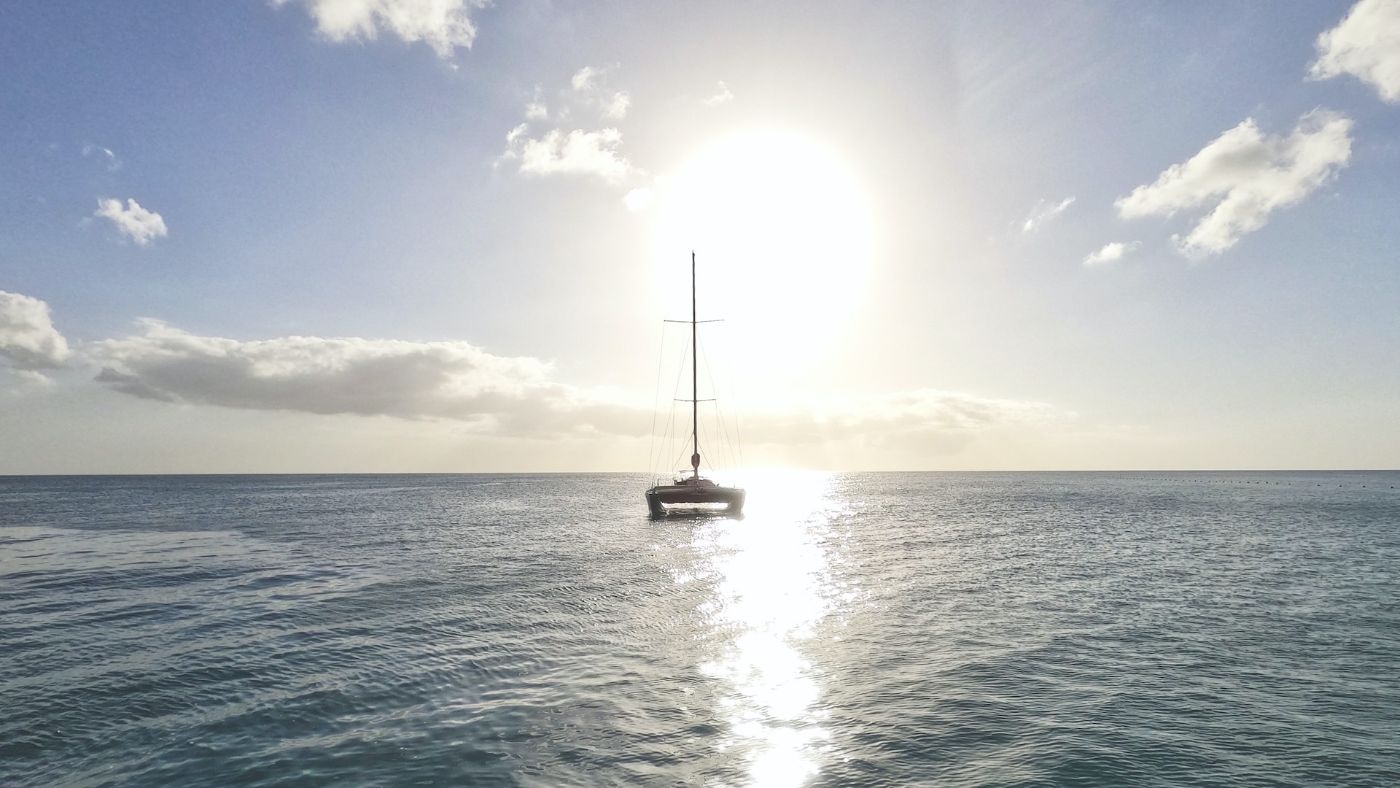
Aside from stability, another advantage of a catamaran is its speed. Because they have two hulls, they create less drag than a single hull and can move through the water more quickly and efficiently. This can be especially useful if you're trying to get somewhere quickly or if you're racing.
The height of the wave can affect the chance of capsizing
Wave height is a significant factor when it comes to catamaran capsizing. The higher the waves, the greater the risk of capsizing. This is because the waves can exert a significant amount of force on the boat, causing it to tip over.
Wave capsize occurs when a boat overtakes a wave and sinks its bow into the next one, causing it to capsize. However, this is also not very common and can usually be avoided by keeping an eye on the waves and adjusting your speed and course accordingly.
Wind speed is another important factor to consider
The stronger the wind, the more likely it is that a catamaran will capsize. The wind can create a lot of pressure on the sails, which can cause the boat to lean to one side and potentially capsize. To know more about the ideal wind speed in sailing, read this article.
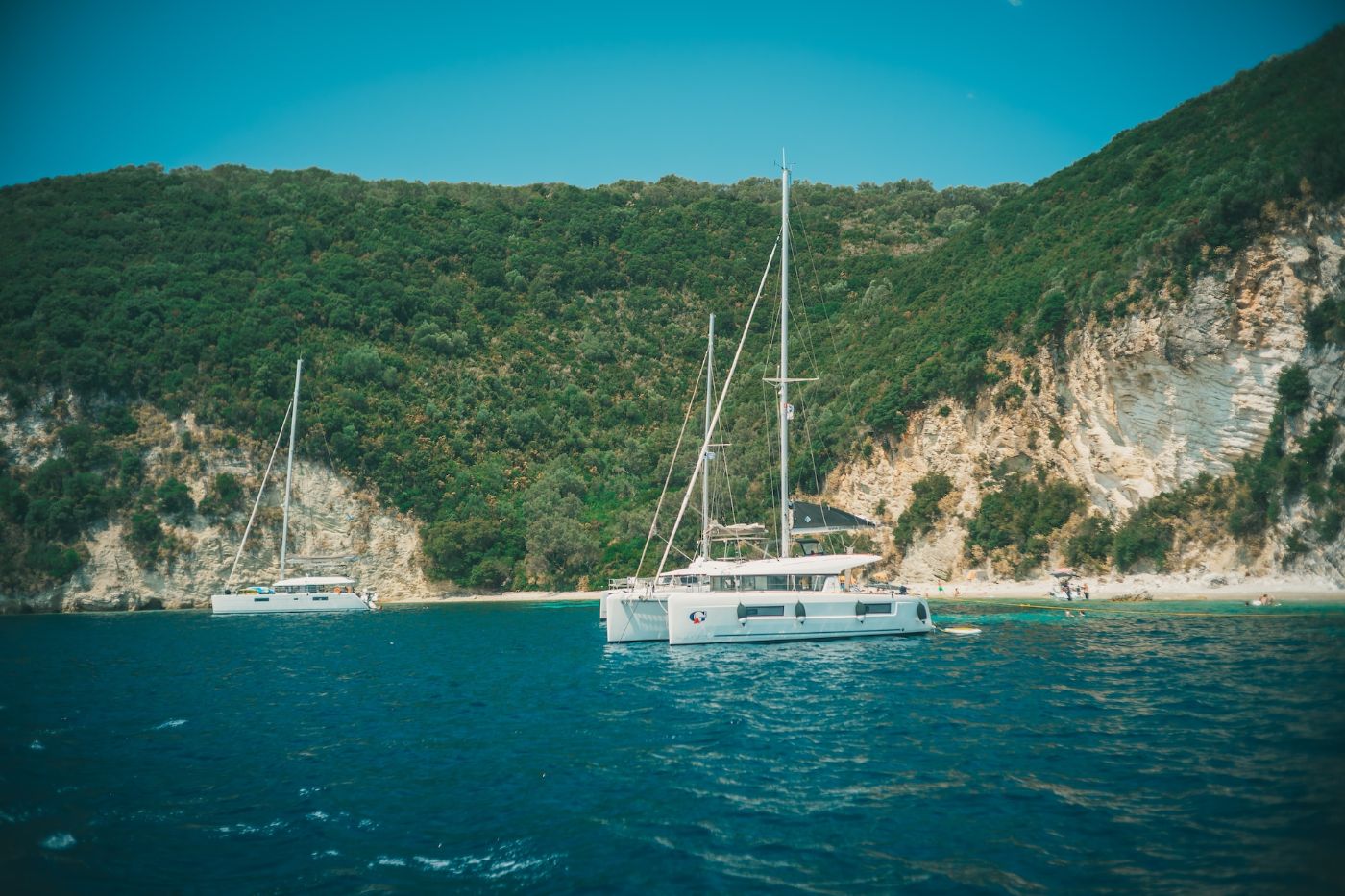
Weather conditions can also play a role in catamaran capsizing
If there is a storm or other severe weather conditions, the risk of capsizing is much higher. Perhaps consider checking the weather forecast before setting out on a catamaran to ensure that conditions are safe. You may also try reading this article on the possible danger of sailing through thunderstorms.
Breaking waves can cause a catamaran to capsize
When waves break, they release a significant amount of energy, which can cause the boat to capsize. Try to keep an eye out for breaking waves and avoid them if possible.
The overall sailing condition can increase the likelihood of capsizing
You may need to be aware of the conditions and take appropriate precautions to ensure that you stay safe while on the water.
1. Ensure proper weight distribution
To prevent capsizing, you could check if the weight on your catamaran is evenly distributed, with heavier items stored low and towards the center of the boat. Try to avoid overloading your catamaran with too much weight.
2. Learn the right way of reefing
Reefing is the process of reducing the size of your sails to adjust to changing wind conditions. When the wind starts to pick up, you will need to reef your sails to prevent your catamaran from heeling over too much. You must learn how to reef your sails properly before you set out on your journey.
3. Know how to properly anchor and use the right anchor
An anchor can help keep your catamaran in place and prevent it from drifting in strong currents or winds. You need to know how to properly anchor your catamaran and always use an anchor that is appropriate for the size of your boat. Learn different anchoring techniques in tough conditions through this article: Boat Anchoring Techniques Explained (Illustrated Guide)
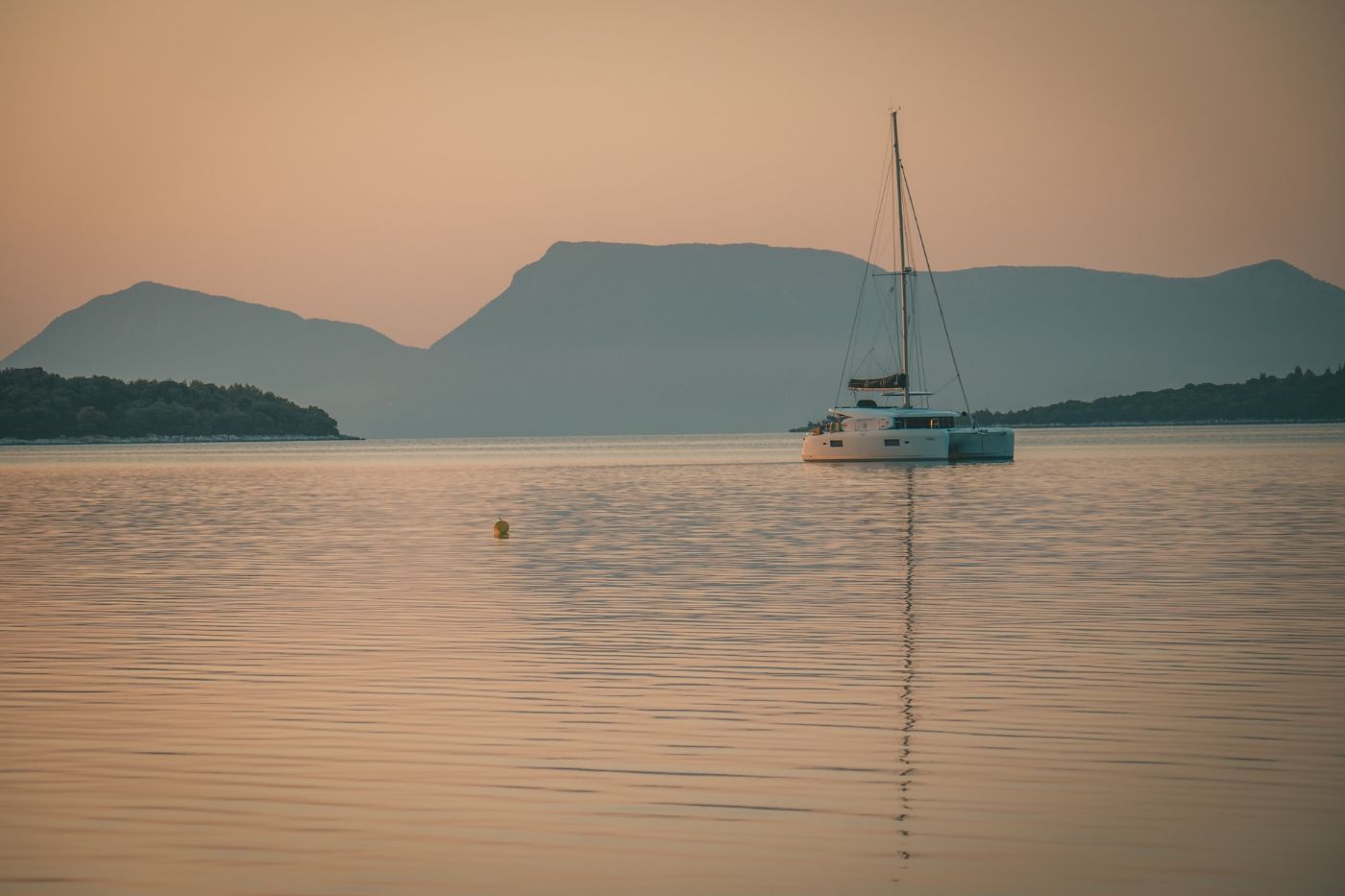
4. Utilize your catamaran's engine
Your engine can be a valuable tool for preventing capsizing. If you find yourself in a dangerous situation, such as strong winds or currents, you can use your engine to help keep your catamaran stable and prevent it from capsizing.
5. Use your boat tools to prevent it from capsizing
Keels, daggerboards, and centerboards all help stabilize your catamaran and prevent capsizing. You may need to check if these are properly installed and maintained.
6. Use the drogue to slow down the boat
A drogue is a device that can help slow down your catamaran and prevent it from capsizing in heavy seas. You can check if you have a drogue on board and learn how to properly use it in case you need to.
7. Make sure to have safety equipment onboard
Always make sure you have the proper safety equipment on board, including life jackets, flares, and a first aid kit. Everyone on board must also know where the safety equipment is located and how to use it.
8. Use an autopilot
Autopilot can help keep your catamaran stable and prevent it from heeling over too much. Consider learning how to properly use your autopilot before you set out on your journey.
Capsizing a catamaran can be a scary experience, but with proper preparation and practice, you can easily handle it. When the boat flips upside down, all the loose gear in the boat floats away (or sinks), and you are left with a capsized boat. Here are some steps that can help you recover from a catamaran capsize:
The first thing to do when your catamaran capsizes is to remain calm. Take a deep breath and assess the situation. Check if everyone on board is safe and accounted for.
Position the catamaran to self-right
Catamarans are designed to self-right, which means that they can turn themselves back over after capsizing. To self-right, the boat needs to be positioned in a certain way, usually with the mast pointing downwind.
Help the catamaran to self-right using the righting lines
If your catamaran doesn't self-right, you can help it by using the righting lines. These lines are attached to the bottom of the hulls, and they can be used to pull the boat back upright.
The buoyancy of the catamaran can help you recover
Catamarans are designed to be buoyant , which means that they can float even when they are upside down. This makes it easier to recover from a capsize.
Be prepared
The best way to prepare for a capsize is to practice recovering from one. Set aside some time to practice capsizing your catamaran in a controlled environment, like a calm lake. This will help you build confidence and prepare you for the real thing.
Leave a comment
You may also like, catamaran vs monohull in rough seas: which is better.
Catamarans and monohulls have different designs that affect how they handle rough sea conditions. In fact, they have an advantage over each other when sailing in …
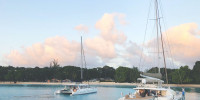
Are Catamarans Safer than Monohulls? - Not Always
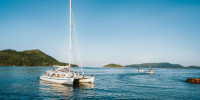
The Perfect Size Catamaran to Sail Around the World
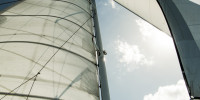
What is the Ideal Wind Speed for Sailing?

The Illustrated Guide To Boat Hull Types (11 Examples)
Own your first boat within a year on any budget.
A sailboat doesn't have to be expensive if you know what you're doing. If you want to learn how to make your sailing dream reality within a year, leave your email and I'll send you free updates . I don't like spam - I will only send helpful content.
Ready to Own Your First Boat?
Just tell us the best email address to send your tips to:

Mastering Catamaran Sailing: Learn How to Sail a Catamaran like a Pro
Alex Morgan
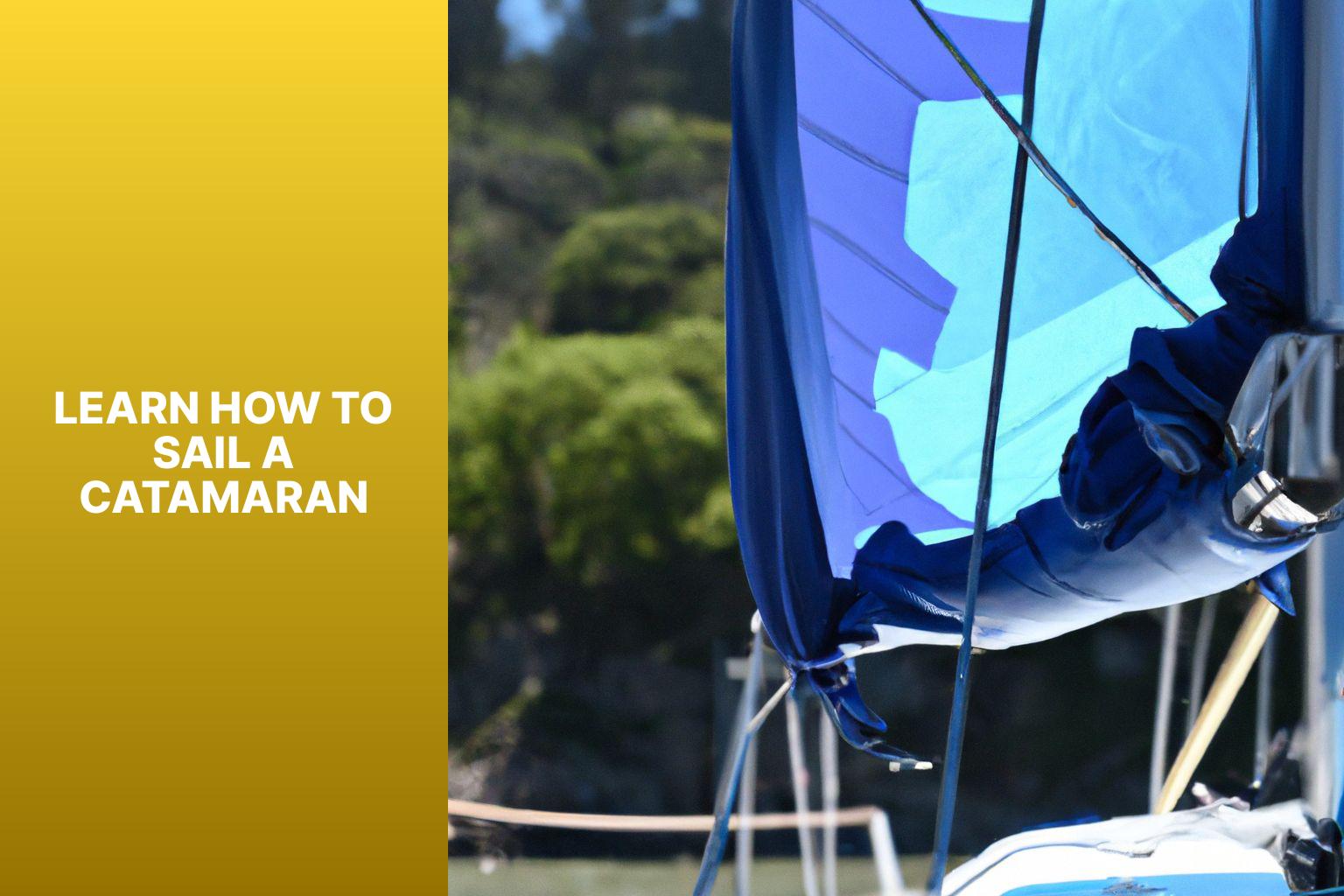
Sailing a catamaran is an exhilarating experience that allows you to harness the power of the wind and navigate the open waters with agility and speed. If you’re interested in learning how to sail a catamaran, it’s essential to understand the basics, prepare properly, learn key sailing techniques, and acquire navigation skills specific to catamarans. This comprehensive guide will provide you with the necessary knowledge and techniques to confidently sail a catamaran.
Introduction to Sailing a Catamaran
Sailing a catamaran offers a unique sailing experience with its twin hulls, stability, and spacious deck. Before diving into the specifics, it’s important to understand the fundamentals of catamarans and how they differ from monohulls.
Understanding the Basics of a Catamaran
To fully grasp the art of catamaran sailing, you need to first comprehend what a catamaran is and how it differs from a monohull. This section will provide a clear definition of a catamaran and highlight its distinctive features.
Preparation for Sailing a Catamaran
Before setting sail, proper preparation is crucial to ensure a safe and enjoyable experience. This section will cover essential steps such as conducting safety equipment checks, understanding wind and weather conditions, and making necessary preparations for sailing a catamaran.
Key Sailing Techniques for Catamarans
Mastering key techniques is essential to maneuvering and controlling a catamaran effectively. This section will delve into important skills such as steering and maneuvering, sail trim and adjustment, tacking and jibing, and understanding points of sail specific to catamarans.
Navigation and Seamanship for Catamarans
Navigating a catamaran requires a solid understanding of chart reading, course planning, and the rules of the road. This section will provide guidance on reading nautical charts, planning routes, and understanding the right-of-way rules when sailing a catamaran.
Recovering from Common Sailing Challenges
Even with proper preparation, sailors may encounter challenges while on the water. This section will address common issues such as capsize and the techniques for righting a catamaran, as well as strategies for dealing with strong winds and heavy seas.
Additional Resources for Learning Catamaran Sailing
To further enhance your knowledge and skills in catamaran sailing, this section will provide a list of helpful resources, including books, online courses, and sailing clubs, where you can continue your learning journey.
By following this guide and honing your skills, you’ll embark on a rewarding adventure as you navigate the seas with confidence and expertise in sailing a catamaran.
Key takeaway:
- Learning to sail a catamaran maximizes your sailing experience: Sailing a catamaran allows you to navigate the waters in a unique and exciting way, enhancing your overall enjoyment of the sport.
- A catamaran offers a different sailing experience from a monohull: Understanding the basics of a catamaran helps you appreciate its distinct characteristics, such as stability and speed, compared to traditional monohull sailboats.
- Being prepared and understanding key sailing techniques are crucial: Prioritizing safety, learning about necessary equipment, and mastering sailing techniques like steering, sail trim, and tacking ensure a successful and enjoyable catamaran sailing experience.
A catamaran is a boat with two parallel hulls connected by a bridge. Understanding the basics of a catamaran is important to fully enjoy the unique sailing experience it offers. These hulls provide stability and reduce drag, enabling higher speeds. Catamarans are used for sailing , cruising , and racing .
The design allows for a spacious interior layout, making it ideal for leisure activities or living aboard. One advantage of a catamaran is its shallow draft , which allows for navigation in shallower waters . When sailing, it’s crucial to have a good grasp of the components like the mast , sails , rigging , and helm . Learning how to trim the sails and adjust the rigging optimizes performance. Maneuvering the catamaran, including tacking and jibing , controls direction and speed.
Safety is paramount, so having a clear understanding of safety procedures and possessing the necessary equipment is essential. With a thorough understanding of the basics, you can confidently enjoy the unique sailing experience a catamaran offers.
What is a Catamaran?
A catamaran, also known as a cat , is a type of boat with two parallel hulls connected by a deck. It is specifically designed to prioritize stability, achieved through a wider base and weight distribution. Catamarans are renowned for their spaciousness and maneuverability , making them a popular choice for sailing and cruising enthusiasts.
One notable advantage of a catamaran is its ability to achieve higher speeds compared to monohulls . This can be attributed to the wide hulls, which result in less drag and enable faster and smoother sailing experiences. The dual hull design enhances stability , reducing the likelihood of rolling or capsizing , particularly in rough waters.
Catamarans also offer a significant advantage in terms of living space and comfort . Thanks to the presence of two separate hulls, these boats can accommodate cabins , lounges , and various amenities. As a result, catamarans are considered ideal for long-distance cruising or liveaboard experiences , providing ample room for relaxation and enjoyment .
When it comes to sailing performance, catamarans excel in upwind capabilities and have the ability to sail closer to the wind compared to monohulls. They are easier to maneuver and require less effort to handle, making them an excellent choice even for beginners embarking on their sailing journey .
How is a Catamaran Different from a Monohull?
Catamarans have greater stability than monohulls due to their wider beam and two hulls. This stability reduces tipping and rolling in rough seas.
Compared to monohulls , catamarans have a shallower draft, allowing them to navigate in shallow waters and anchor closer to the shore.
Catamarans provide more interior space with their wider beam, resulting in larger cabins, living areas, and storage compartments.
Catamarans are known for their speed. The twin hull design reduces drag, enabling them to sail faster than monohulls , particularly in light winds.
In terms of sailing motion, catamarans have a flatter and more stable movement, offering increased comfort for those prone to seasickness. They also have better maneuverability and can sail closer to the wind compared to monohulls .
Pro-tip: If you desire a spacious, stable, and fast sailing experience, a catamaran is an excellent choice. Its unique design provides comfort and performance, making it a popular option for cruising and long-distance sailing.
Prepping your catamaran for an epic sailing adventure? Get ready to set sail with confidence as we dive into the vital elements of catamaran preparation. From essential safety equipment and thorough checks to mastering the art of reading wind and weather conditions, we've got you covered. Safety first and a keen understanding of the natural elements will ensure smooth sailing and unforgettable experiences on the open water. Let's dive into the nitty-gritty details and get you fully prepared to harness the power of the winds and conquer the seas!
Safety Equipment and Checks
When sailing a catamaran, it is essential to prioritize safety. It is important to follow these steps for safety equipment and checks:
- First and foremost, inspect the life jackets to ensure they are in good condition and functioning properly.
- Take the time to check the throwable flotation devices and ensure they are readily available and in working order.
- Verify that the catamaran has a properly installed fire extinguisher, which is crucial in case of any fire emergencies.
- Make sure that distress signals, such as flares or emergency signaling devices, are present and easily accessible.
- It is vital to inspect and test the bilge pump to make sure it is functioning correctly and can effectively remove any water from the boat.
- Check the navigation lights to ensure they are properly functioning, as they are essential for visibility during nighttime or low-light conditions.
- Verify the availability and condition of a sound signaling device, such as a horn or whistle , which can alert others in case of emergencies.
- Ensure that the catamaran is equipped with a VHF radio or other communication devices for effective communication during emergencies.
- Inspect the anchor and anchor line to ensure their good condition, as they are crucial for securing the catamaran in place.
- Check the availability and condition of navigation charts and a compass, which are essential for proper navigation and orientation.
Pro-tip: It is highly recommended to regularly inspect and maintain all safety equipment to ensure they always work properly. Performing safety checks before every sailing trip is crucial to ensure the well-being and safety of everyone onboard.
Understanding Wind and Weather Conditions
Understanding wind and weather conditions is essential when sailing a catamaran. It is crucial to consider wind direction, wind strength, and current weather conditions in order to plan your sail effectively and ensure a safe and enjoyable experience.
Having a good understanding of wind direction is vital while sailing. By adjusting your sails accordingly, you can maximize the power and efficiency of your catamaran. Knowing the strength of the wind can help you determine the appropriate sail trim and make adjustments for optimal performance .
Weather conditions play a critical role in ensuring safety while sailing. It is important to check weather forecasts before setting sail and to remain aware of potential changes in weather patterns. Understanding the possibility of storms, strong winds, or heavy seas allows you to make informed decisions on when it is safe to sail and when it is best to stay ashore.
By understanding wind and weather conditions, you can effectively plan your sail, adjust your sails for optimal performance, and ensure the safety of yourself and your crew. Continuously monitoring and assessing these conditions throughout your sailing journey allows for well-informed decisions and contributes to a successful and memorable experience on your catamaran.
Get ready to set sail and master the art of catamaran sailing with these key techniques! We will unravel the secrets behind steering and maneuvering, sail trim and adjustment, tacking and jibing, and understanding the points of sail . From controlling the direction of your catamaran to optimizing your sail position, this section has got you covered with practical tips that will enhance your sailing skills. So, hop on board and let’s embark on a thrilling sailing adventure !
Steering and Maneuvering
When steering and maneuvering a catamaran, it is important to keep in mind the following techniques:
- Use the tiller or steering wheel to control the direction of the catamaran. Push the tiller away from you to turn the catamaran to starboard (right), and pull the tiller towards you to turn the catamaran to port (left).
- Work closely with the crew and communicate clearly to ensure smooth maneuvering. Assign specific roles and responsibilities to each crew member, such as trimming the sails or adjusting the daggerboards .
- Adjust the sails accordingly to optimize the catamaran's performance. Trim in the mainsail and jib to generate more power and speed, or ease the sails to reduce power in strong winds.
- Pay attention to the catamaran's speed and steer accordingly. A faster catamaran may require more precise and proactive steering to maintain control.
- Practice tacking and jibing techniques to change direction smoothly. Tacking involves turning the bow of the catamaran through the wind, while jibing involves turning the stern of the catamaran through the wind. Always be mindful of the wind direction and adjust your maneuvering accordingly.
By mastering these techniques, you'll be able to navigate your catamaran with confidence and precision.
Sail Trim and Adjustment
For optimal performance and stability of a catamaran, sail trim and adjustment are essential. Follow these steps to ensure proper sail trim:
- Begin by checking the telltales of the main sail to ensure smooth flow without any fluttering or stalling.
- Next, focus on the jib or headsail and adjust the sheet tension to achieve proper trim and generate lift.
- Paying attention to the traveler position is crucial. Move it accordingly to control the boom angle and sail shape based on wind conditions.
- Adjust the halyard tension to prevent any sagging or fluttering.
- Continuously monitor and adjust the tension in control lines, such as the jib sheet and mainsheet , to achieve the desired sail shape and balance.
- While sailing, constantly assess the sail trim. Observe the telltales, listen to the wind, and take note of any changes in speed. Fine-tune the trim for optimal performance and control.
By consistently adjusting sail trim based on changing conditions, you’ll ensure a pleasurable and efficient catamaran sailing experience.
Tacking and Jibing
Sailing a catamaran requires a good understanding of the techniques for tacking and jibing . Here are the steps to master these maneuvers:
- To change direction when the wind shifts, turn the helm or the wheel away from the wind.
- Release the jib sheet and let the jib sail luff as the bow of the catamaran passes through the wind.
- Trim in the jib sheet on the new tack to regain speed and control.
- Ease out the mainsail sheet and move the boom to the opposite side of the catamaran.
- Steer the catamaran downwind to swing the mainsail across the boat.
- Switch the mainsail sheet to the new side and trim it in to stabilize the sail as the mainsail crosses over.
Pro-tip: It is advisable to practice tacking and jibing in light winds before attempting these maneuvers in stronger conditions. This will help build confidence and develop a solid understanding of the catamaran’s handling characteristics.
Understanding Points of Sail
To gain a comprehensive comprehension of Understanding Points of Sail , it is important to acknowledge the various angles at which a sailboat can navigate in relation to the wind.
The initial point of sail is referred to as the “no-sail zone,” during which the wind is directly facing the boat’s front, making it impossible for the sails to catch the wind.
Subsequently, we have the “close-hauled” or “upwind” point of sail, where the boat skillfully sails as close to the wind as possible without stalling. In this scenario, the sails are meticulously adjusted to create lift and propel the boat forward.
Moving on, the “close reach” point of sail occurs when the boat is slightly angled away from the wind, enabling the sails to fill and generate power.
As for the “beam reach” point of sail, the boat is positioned at a right angle to the wind, causing the wind to blow directly onto the side of the sails. This results in the boat achieving the desired speed and momentum.
On the other hand, the “broad reach” point of sail sees the boat sailing at an angle away from the wind, which allows the sails to fill more and generate even greater speed.
We have the “downwind” or “running” point of sail, where the boat sails directly with the wind coming from behind. To ensure an efficient catch of the wind, the sails are let out as far as possible in this scenario.
Acquiring a solid understanding of points of sail is paramount when it comes to taking control of the direction and speed of a catamaran, ultimately maximizing its performance. By skillfully adjusting the sails and steering according to the various points of sail, sailors are able to effectively navigate their catamarans, ensuring a smooth and efficient sailing experience.
When it comes to sailing a catamaran, one crucial skill to master is navigation and seamanship . In this section, we’ll dive into the essentials of chart reading and course planning , helping you plot your path with confidence on the open waters. We’ll explore the rules of the road and right-of-way , ensuring you understand the fundamental principles of safe sailing. So, sharpen your skills and join us as we navigate the captivating world of catamaran seamanship !
Chart Reading and Course Planning
When sailing a catamaran, chart reading and course planning are essential for a safe journey. Understanding and properly navigating charts will help you choose the best route and avoid potential hazards. The following table outlines key aspects of chart reading and course planning for catamaran sailing:
By mastering the skills of chart reading and course planning, you can confidently and safely navigate your catamaran, maximizing your enjoyment of the sailing experience.
Rules of the Road and Right-of-Way
To sail a catamaran safely and avoid collisions, it’s crucial to understand the Rules of the Road and Right-of-Way .
- Sailboats fall under the International Regulations for Preventing Collisions at Sea (COLREGS) , which provide guidelines for preventing accidents in various situations.
- According to the Rules of the Road , when two sailboats approach each other on different tacks, the boat on the starboard tack has the Right-of-Way and the boat on the port tack must keep clear.
- When a sailboat approaches a power-driven vessel, the sailboat must yield and keep clear of the power-driven vessel’s path.
- When overtaking another sailboat, the overtaking boat is responsible for keeping clear and avoiding a collision.
- It’s important to understand and follow these Rules of the Road and Right-of-Way to ensure the safety and well-being of everyone on the water.
I was sailing my catamaran on a sunny day when I spotted another sailboat coming towards me. Realizing we were on a collision course, I acted quickly and adjusted my course to give way to the other sailboat, which was on the starboard tack. By following the Rules of the Road and Right-of-Way , we avoided a potentially dangerous situation and continued enjoying our day on the water. This experience highlights the importance of sailors being knowledgeable about the Rules of the Road and Right-of-Way for a safe and enjoyable sailing experience.
Navigating the unpredictable waters of sailing can come with its fair share of challenges. In this section, we’ll delve into practical techniques for recovering from common sailing mishaps, empowering you to conquer any situation with confidence. From capsize and righting a catamaran to dealing with the relentless forces of strong winds and heavy seas, we’ll equip you with the necessary knowledge to overcome these hurdles and keep your sailing adventure afloat. So, let’s dive in and uncover the secrets to mastering the art of recovery on the open waters!
Capsize and Righting a Catamaran
Capsize and righting a catamaran can be challenging, but with knowledge and techniques, you can recover safely. When facing a catamaran capsize, follow these steps to ensure a successful recovery:
1. Stay calm and assess the situation. It’s important to maintain a level-headed approach.
2. Ensure everyone onboard wears a life jacket and is accounted for. Safety should always be a priority.
3. Communicate with your crew to determine the best approach for righting the catamaran. Teamwork and coordination are crucial at this stage.
4. Release and secure the sails to prevent further problems. This will help minimize any potential damage.
5. Work together as a team to shift the crew’s weight towards the side of the catamaran that needs lifting. Distributing the weight properly is essential.
6. Utilize weight distribution and leverage to gradually lift the capsized catamaran. It’s important to take this process one step at a time.
7. Continue applying steady pressure until the catamaran is fully righted. Persistence is key during this stage.
8. Check the boat for damages or water ingress and address them accordingly. Taking care of any issues promptly is crucial for safety.
9. Retrieve any lost belongings or equipment that may have fallen overboard during the capsize.
10. Restart the sail and ensure proper stability. Confirm that everything is in order before resuming your sailing adventure.
By following these steps and working together, you can successfully recover from a catamaran capsize and continue enjoying your sailing adventure.
Dealing with Strong Winds and Heavy Seas
Dealing with strong winds and heavy seas while sailing a catamaran can be a challenging task. With the right techniques and precautions, it can be managed effectively. Here are some important considerations to keep in mind:
1. Maintain a steady course: It is crucial to hold the helm firmly and adjust the sails to maintain balance and control in the face of strong winds and heavy seas .
2. Reef the sails: When the winds become too powerful, it is important to reduce the sail area exposed to the wind by reefing the sails. This technique helps in controlling the boat’s speed and stability. Familiarize yourself with the specific catamaran’s reefing technique beforehand.
3. Adjust the daggerboards: Daggerboards are retractable keels that play a vital role in providing stability and preventing tipping over in strong winds . Adjusting the daggerboards to the appropriate depth is important to maintain balance and control in challenging conditions.
4. Monitor the sea state: Pay close attention to the waves and their direction. Anticipating changes in the swell and taking appropriate action, such as avoiding broadside hits and angling the boat into the waves, ensures a smoother and more comfortable ride.
5. Use safety equipment: It is imperative to always have necessary safety equipment onboard, including life jackets, flares, and a tethering system. When challenging conditions arise, wearing a safety harness is essential to prevent falling overboard.
By following these techniques and taking proper precautions, you can effectively deal with strong winds and heavy seas while sailing a catamaran . Remember, experience and practice are crucial in safely and confidently handling challenging conditions.
Here are some resources to enhance your catamaran sailing skills:
– Online forums: Joining forums dedicated to catamaran sailing can provide valuable knowledge and interaction with experienced sailors.
– Instructional videos: Online instructional videos offer step-by-step guidance on various aspects of catamaran sailing, helping you understand different maneuvers and techniques.
– Books and guides: Several resources cover both fundamental and advanced techniques of catamaran sailing, providing in-depth knowledge for self-paced learning.
– Courses and workshops: Participating in formal courses or workshops conducted by sailing schools or yacht clubs offers hands-on training and guidance from experienced instructors, improving your skills.
– Online tutorials: Websites offer catamaran sailing tutorials with comprehensive lessons, interactive quizzes, and feedback, enhancing your understanding and proficiency.
With these resources, you can cultivate your catamaran sailing skills and become a proficient sailor. Practice consistently and remain open to learning from others. Happy sailing!
Some Facts About Learn How To Sail A Catamaran:
- ✅ Sailing a catamaran is similar to sailing a monohull, with most skills easily transferable.
- ✅ Catamarans have become very popular in the last 5 years due to their advantages over monohulls.
- ✅ Catamarans have two hulls connected by a bridge deck, providing stability and space for cabins and amenities.
- ✅ Catamarans are considered safer than monohulls due to their stability and the presence of two engines.
- ✅ Monohulls are harder to sail due to heeling and confined spaces, while catamarans offer easier movement and stability.
Frequently Asked Questions
How can i learn how to sail a catamaran.
To learn how to sail a catamaran, you can explore various options such as online schools, books, and sailing schools. Going on a week-long or weekend cruise can provide valuable hands-on experience. Watching videos, reading books, and joining a crew of experienced sailors can also help you learn the basics and improve your skills.
What are some recommended resources for learning how to sail a catamaran?
For beginners, online schools like Nautic Ed and reputable institutions like ASA (American Sailing Association) and US Sailing Association offer catamaran courses that provide structured training and guidance. Advanced books on catamaran sailing can also be a great resource, helping you familiarize yourself with boat parts, terminology, and essential skills.
How long does it take to learn how to sail a catamaran?
The time it takes to learn how to sail a catamaran may vary depending on individual learning abilities and dedication. Typically, it ranges from 14 days to five years. With the right training, practice, and experience, you can progress efficiently and gain confidence in sailing a catamaran.
Are there any short-term catamaran sailing courses available?
Yes, there are short-term catamaran sailing courses available. Sailing schools like ASA and US Sailing Association offer land and on-water training programs that provide intensive courses tailored to teach you how to sail a catamaran effectively within a shorter timeframe.
What are the key differences between catamarans and monohulls in sailing?
There are several differences between catamarans and monohulls in sailing. Catamarans have a bridge deck and two hulls connected, providing stability, ample space, and ease of movement. They are considered safer due to their stability and the presence of two engines. On the other hand, monohulls are harder to sail due to heeling and confined spaces.
Do I need any certification to sail a catamaran?
While a cruising catamaran captain’s license is not necessary, having a recognized certificate, such as ASA certification, can increase opportunities to sail and gain the trust of catamaran owners. Certification courses like ASA provide comprehensive training and assessments to ensure you possess the necessary skills and knowledge for safe catamaran sailing.
About the author
Leave a Reply Cancel reply
Your email address will not be published. Required fields are marked *
Save my name, email, and website in this browser for the next time I comment.
Latest posts

The history of sailing – from ancient times to modern adventures
History of Sailing Sailing is a time-honored tradition that has evolved over millennia, from its humble beginnings as a means of transportation to a beloved modern-day recreational activity. The history of sailing is a fascinating journey that spans cultures and centuries, rich in innovation and adventure. In this article, we’ll explore the remarkable evolution of…

Sailing Solo: Adventures and Challenges of Single-Handed Sailing
Solo Sailing Sailing has always been a pursuit of freedom, adventure, and self-discovery. While sailing with a crew is a fantastic experience, there’s a unique allure to sailing solo – just you, the wind, and the open sea. Single-handed sailing, as it’s often called, is a journey of self-reliance, resilience, and the ultimate test of…

Sustainable Sailing: Eco-Friendly Practices on the boat
Eco Friendly Sailing Sailing is an exhilarating and timeless way to explore the beauty of the open water, but it’s important to remember that our oceans and environment need our protection. Sustainable sailing, which involves eco-friendly practices and mindful decision-making, allows sailors to enjoy their adventures while minimizing their impact on the environment. In this…
- Lost password
Please Support TheBeachcats.com
- Forums index page
- :: Catamaran Sailing Discussion
- :: General Sailor Talk
- View latest posts
- Search forums

my first capsize! How to right the boat?
- Print topic
Go to page 1 - 2 [ +1 ]:
- Rank: Lubber
- Registered: Nov 06, 2009
- Last visit: Jul 02, 2023
- Registered: Oct 19, 2006
- Last visit: Aug 16, 2017
- Registered: Dec 01, 2011
- Last visit: Nov 02, 2016
- Registered: Aug 22, 2007
- Last visit: Jan 07, 2015
- Registered: Aug 13, 2010
- Last visit: Mar 10, 2014
- Registered: Jul 06, 2008
- Last visit: Jul 19, 2018
- Rank: Master Chief
- Registered: Jun 20, 2006
- Last visit: Apr 06, 2024
- Posts: 7088
- Registered: Apr 24, 2005
- Last visit: Apr 18, 2023
- Registered: Feb 19, 2008
- Last visit: Aug 26, 2023
- Registered: Jun 17, 2011
- Last visit: Sep 24, 2023
No HTML tags allowed (except inside [code][/code] tags)
- Submit Preview Cancel
Font size: Tiny Small Normal Large Huge
Your browser does not support javascript or you turned it off. The BBCode interface has been disabled.
Your browser does not support javascript or you turned it off. The bbsmile interface has been disabled.
Users on-line
This list is based on users active over the last 60 minutes.
Search The Beachcats
[ Add New Beachcat Event ]
Upcoming Beachcats Events
VIEW FULL CALENDAR
- June 6, 2024
- "Live on the Edge" Multihull Regatta and Race Clinic, Eugene, Oregon
Copyright TheBeachcats.com
Log in or Sign up
You are using an out of date browser. It may not display this or other websites correctly. You should upgrade or use an alternative browser .
Cruising Catamaran Righting System
Discussion in ' Multihulls ' started by Iridian , Aug 3, 2021 .
Iridian Junior Member
I've been reading about capsizes of cruising catamarans recently, and it had me thinking. Would it be possible to make a righting system for a cruising catamaran? Something that could be used to flip the boat back upright once the weather permits... It seems that in most capsize situations, the boat remains largely intact. I am unsure as to the state of the rigging though. For the Leopard and the Anna, both boats seemed to be fine in the inverted position, though both were rescued soon after capsize. The Rose Noelle, on the other hand, was capsized for 118 days. The first thing I thought of was intentionally flooding one of the hulls.. This by itself would be insufficient to accomplish much. The next thing I thought of was to inflate an air bladder of sufficient volume, then pull it down the main halyard, assuming the mast is still intact. Or perhaps drag the bladder down with an attached hose, then fill the bladder after it's at the tip of the mast, or more likely at the strongest point (where the shrouds connect). If the mast is strong enough to support the buoyancy of the air bladder without shattering, the boat could potentially raise up on one hull... The system would need to be functional with 1-2 people and not require any electrical power. I'm not sure how you'd then get the boat flipped the rest of the way, though potentially a combination of flooding one of the hulls along with the bladder would be sufficient. Not sure if something like this is even viable, but would appreciate any thoughts on the matter.
upchurchmr Senior Member
Go research AYRS publications. Lots of discussion and ideas over the last 50 years. A couple of proved systems for re-righting. But only proven in calm water under controlled conditions. The Gougeons had a trimaran they did the same to.
catsketcher Senior Member
There was book published in the 80s called "The Capsize Bugaboo". Capsize Bugaboo - AbeBooks https://www.abebooks.com/book-search/title/capsize-bugaboo/ The best system was the Ruiz system, further developed by Gunter Ullrich for his Kelsall cat that actually did a test before fitout. Catamaran equipped with re-righting device - ULLRICH; GUNTER https://www.freepatentsonline.com/4227474.html In the end, no one has worried much. With modern epirbs, you don't have to wait long and getting salvage is probably easier than re-righting on your own.
alan craig Senior Member
I have a suggestion, but have not researched prior art. Step 1 is inflatable buoyancy at the top of the mast to prevent the boat from turning turtle. This would operate like modern life jackets or possibly car airbags. Step 2 is the system used on the Catapult catamaran dinghy - upper shroud is slackened and lower shroud is shortened until the upper hull can be pulled down or in this case of a larger boat, drops down to water surface. Disadvantages: weight and windage at top of mast and long lines at lower end of shrouds.
- Advertisement:
redreuben redreuben
Difference concept of cruising catamarans
Looking for a small coastal cruising catamaran
Designing a 43' flat panel performance cruising catamaran
Questions about safety of CSK / Polycon Catamarans for cruising
advice sought on sailing rig for mini-cruising catamaran
Unstayed carbon fiber mast on cruising catamaran?
Open source 12-15m high performance/semi-cruising catamaran design
Questions about Small Cruising Catamaran Design and Construction
Round full blunt bow on a cruising catamaran
This is what i had in mind for a 30foot cruising catamaran.
- No, create an account now.
- Yes, my password is:
- Forgot your password?


How to escape a capsized Catamaran
- August 6th, 2021
- Sailing Skills
You may have read my cruise report on sailing a brand new Excess catamaran through the notorious waters of the Bay of Biscay . My account of the heavy seas and strong winds are real – and the withdrawal of all the two of my crew members due to sea sickness makes a strong point here. Right now I am on another delivery trip, it´s a again a 38-feet Excess 11 catamaran and this time it´s the Biscay northbound, the cat has to be sailed to Germany. Well, what shall I say? Different ship, same experiences …
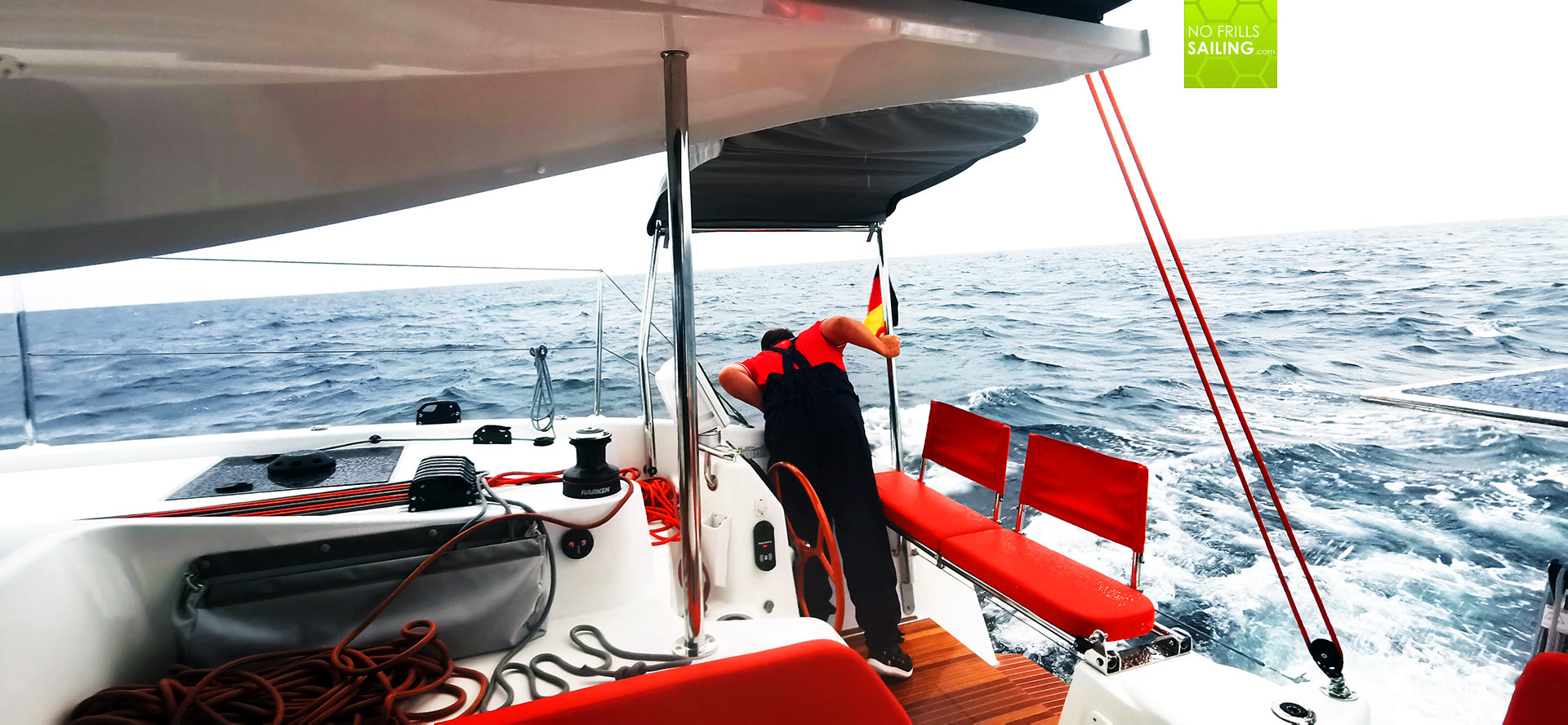
Although in the midst of the summer season this time the God of the Winds isn´t all too generous to us: Headwinds, high windage and ever building seas make this trip as well a stormy one. Definitely not a vocational cruise for sure. Sometimes, mostly during my night watches , when a gust breaks in and the catamaran´s autopilot struggles to keep her on course in the breaking waves, I think of the unthinkable: What if this cat suddenly capsizes ? And what to do then?
In-built safety: Can a Cat capsize?
Let´s rewind here and set the clock back 2 weeks. I inspect the cat in the commissioning yard still on dry land. I roam the hulls, officially looking for scratches or inconsistencies, and between them two I find something interesting. Two big hatches, wide enough to fit a grown-up man through. I take a closer look.
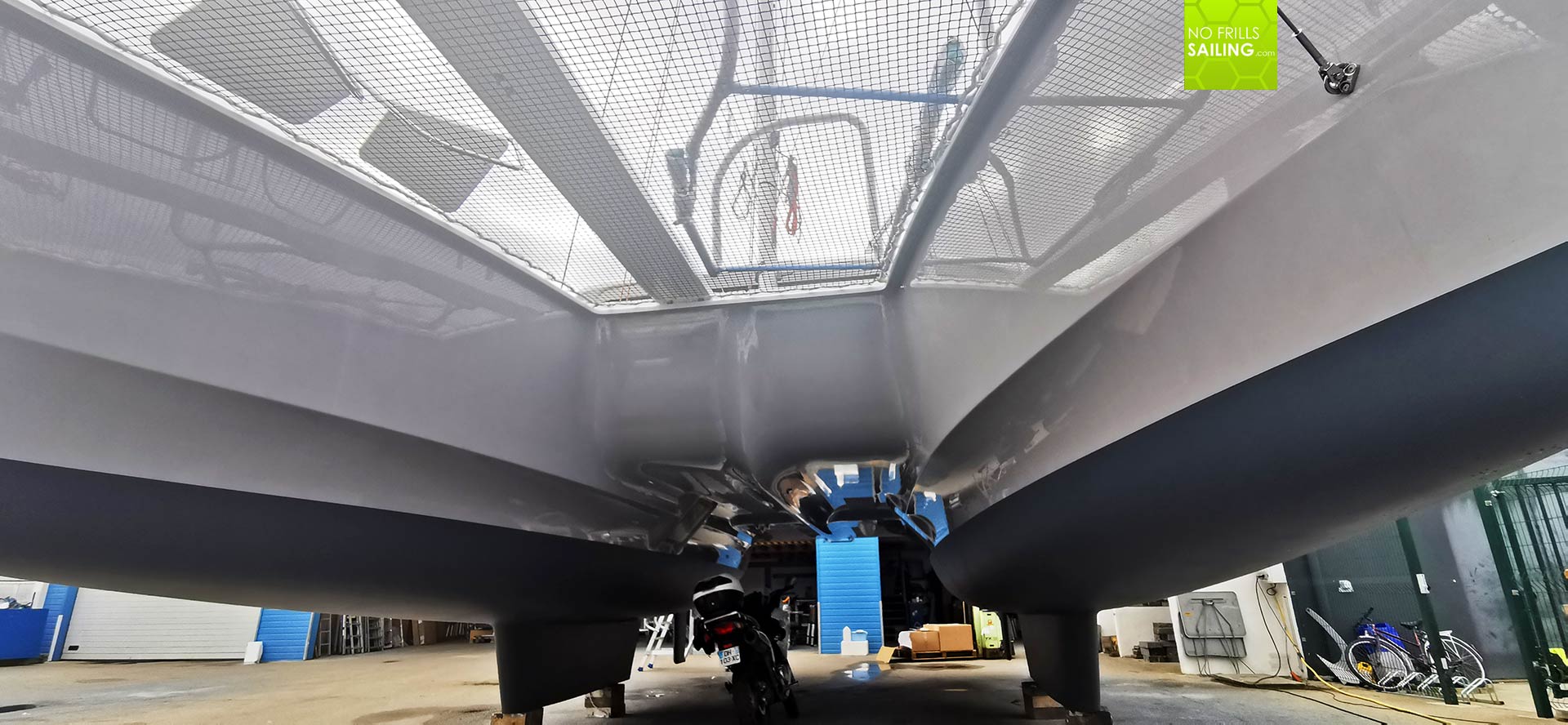
To obtain the Cat A CE-certification a catamaran must offer means of escaping. Since a monohull is self-righting, meaning that it is virtually impossible to capsize and not to return to an upright state (unless the keel is off), a normal monohulled sailboat does only need escape hatches. Our cat does have them too – just at a very different position.
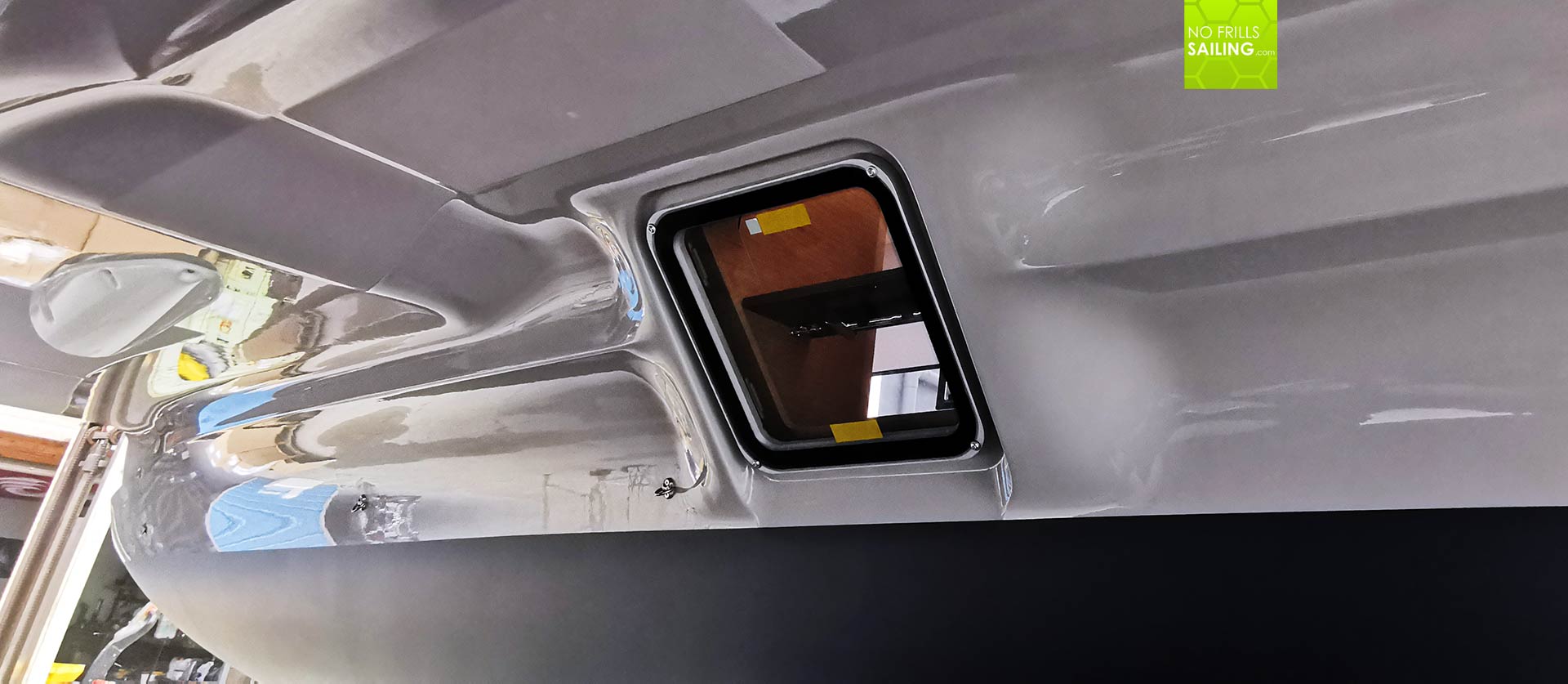
The hatches are of the highest, rigid category. In our case made by French market leader Goiot Systems of Nantes. Massive aluminium frames, fitted by screws and sealed by a thick sealant from the outside to the catamaran, no wave can break inside. I have witnessed this multiple times during my sailing on the cat how massive amounts of fierce waters battered the windows – with no effect on them. So, you can literally bet your life on these parts.
Just in case: What is a Catamaran capsizes?
But what if the catastrophy happens? Well, I´ve checked the system and the code of conduct is very easy and fast. If you happen to find yourself in a capsized cat – everything is upside down now – first of all the clear window of the hatch will provide some natural light which is essential to shake off the first shock, make a clear thought and find the place to be.
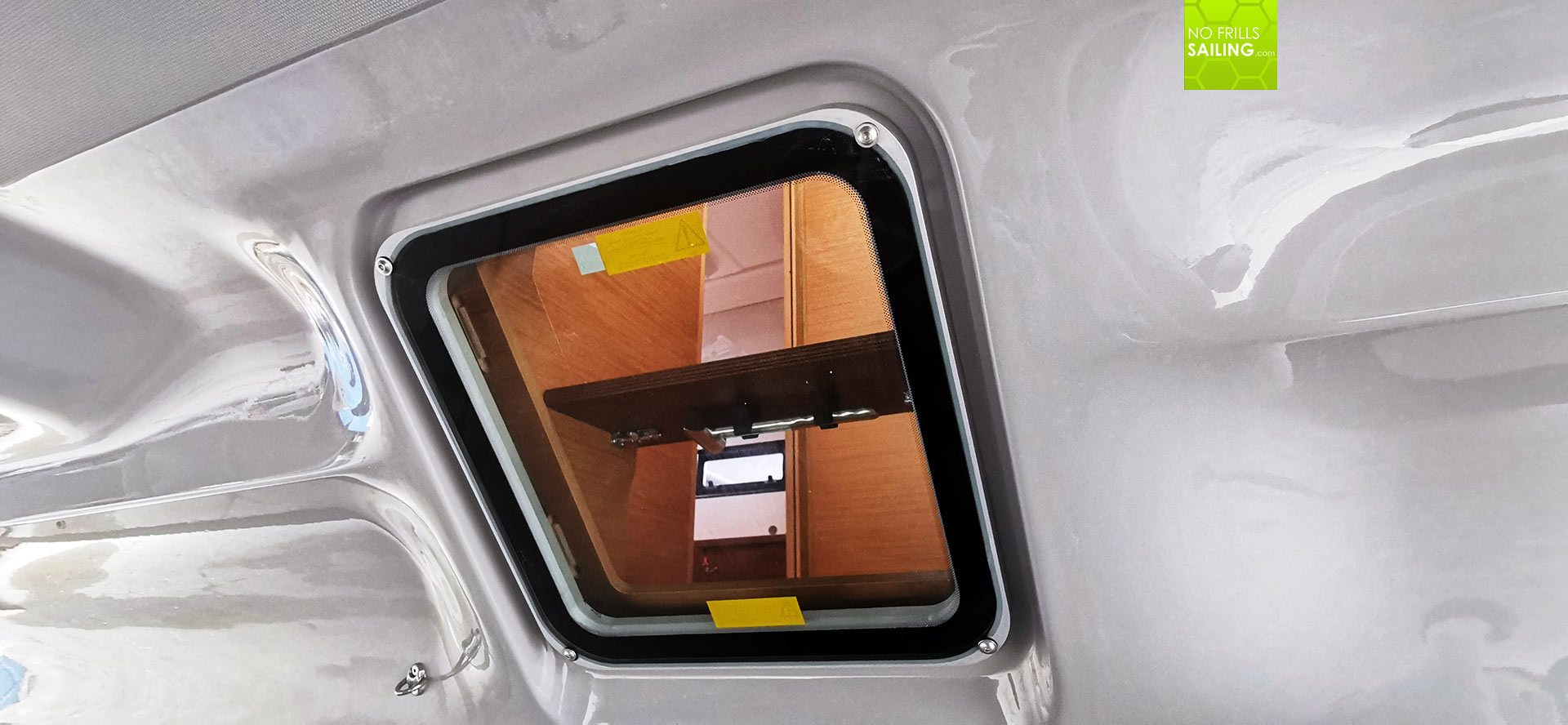
The hatch is built right under the entryway staircase down from the saloon into the two hulls, so you will have to remove the middle-stair. That is done (on my Excess catamaran) by unlocking two heasy lock bars and taking out the step of the frame. On the Excess the step has a secondary safety which is a click-in-bar holding it in place until removed by hand – so no fear that the step will hit you. Remember, when capsized, you will be working hand over head.
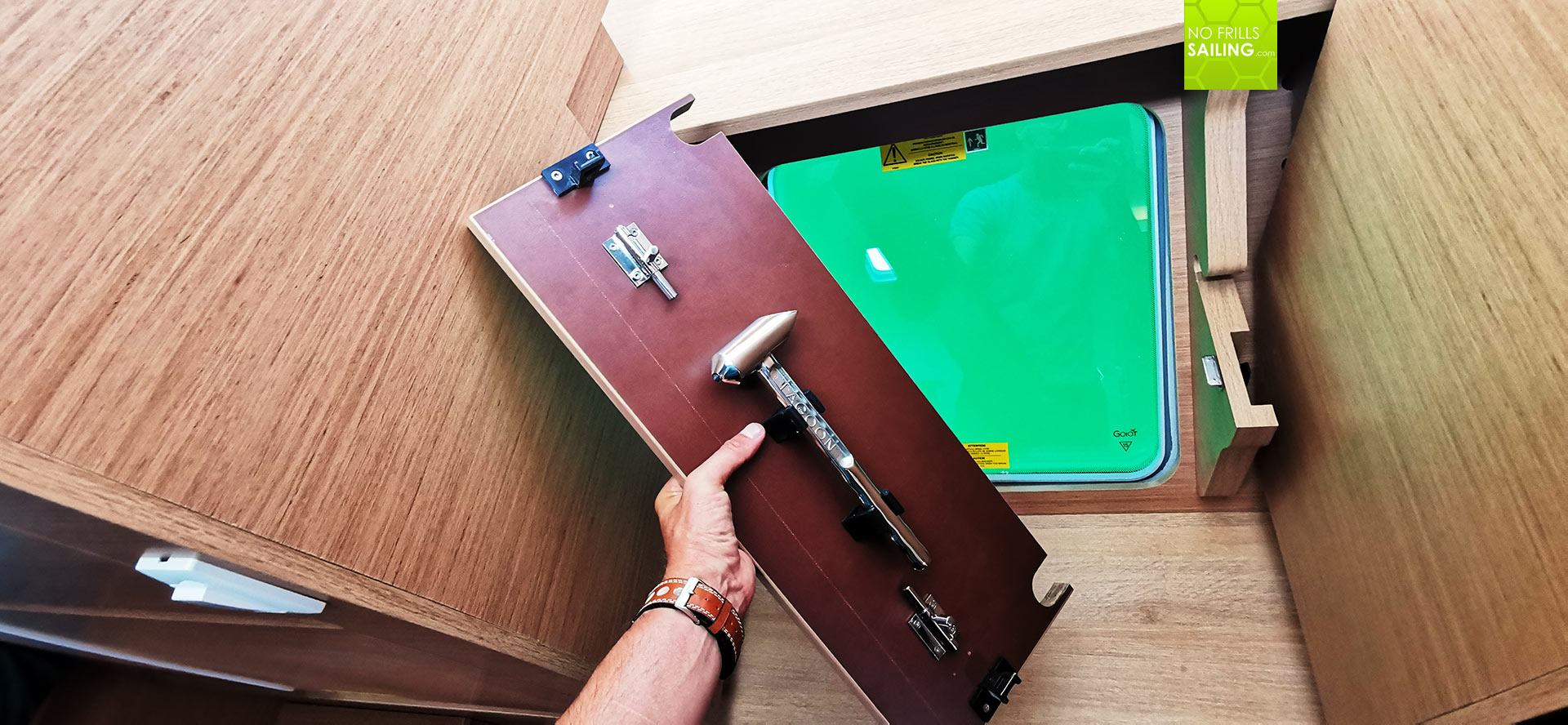
Right under this hatch there is a small massive steel hammer. It´s the kind we know of buses or subway trains. By hitting the hatches glass you will smash it – cover your eyes and protect your face! When the glass is broken, you may clear splinters and finally climb out of the boat. Easier said than done: I can imagine that in such a situation, possibly in heavy seas , maybe injured with fractures or contusions, this is quite an undertaking.
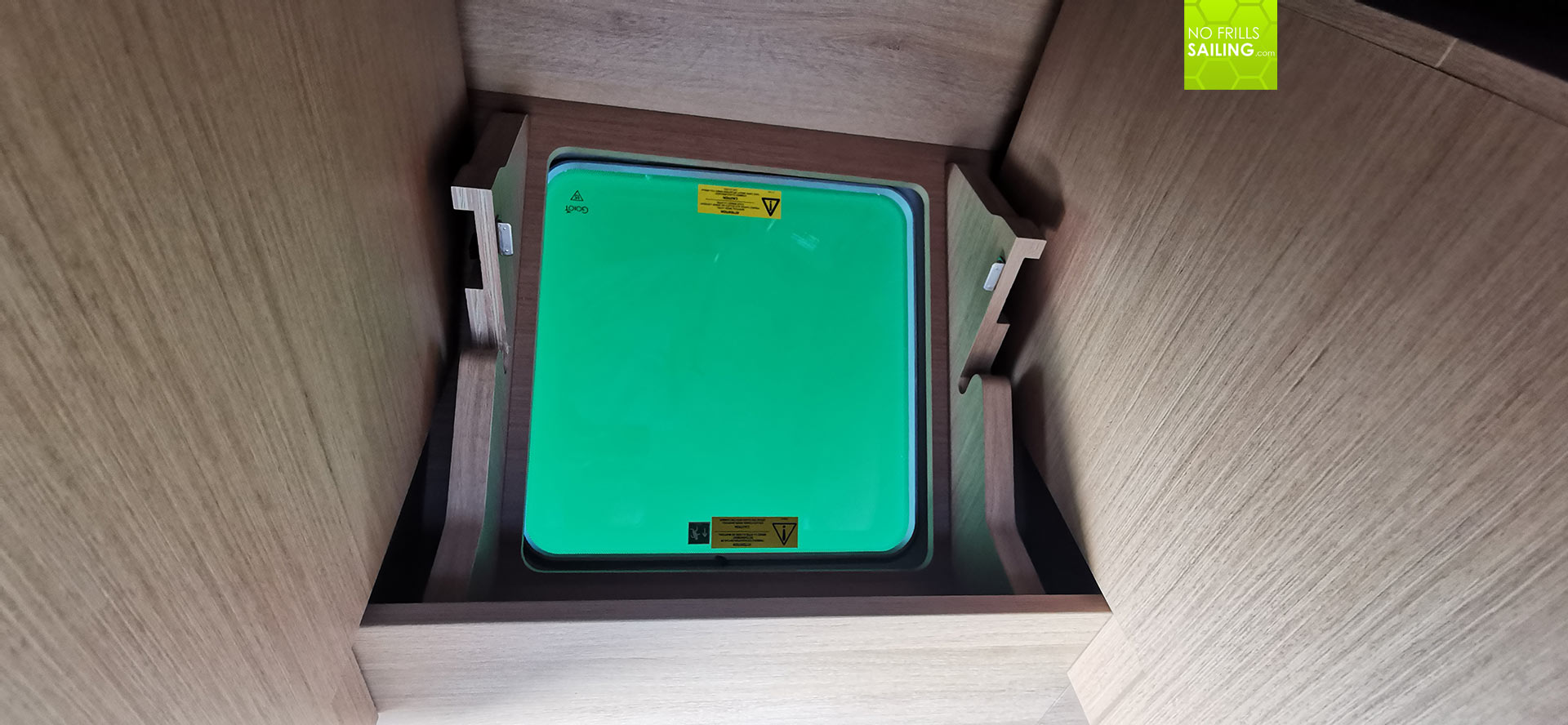
Now, finding yourself in the middle between the two hulls on the capsized catamaran must be as frightening as being inside: With the boat still washed over by roaring waves and brutal seas, maybe the rigging still partially attached down below the cat, jerking and wrenching the poor hulk. For having something to hold on to, the cat has a series of padeyes right aft of the hatch (see my first pictures in on dry land for reference) where a keen skipper might fit a lifeline to.
A better question – how NOT to capsize a multihull
But can a cat capsize? Well, unfortunately yes. A multihull has no keel. Thus no weight down below, hence no lever and no righting moment. The stability of a catamaran is determined by his form (hence: form-stability). Looking at stability curves you might notice that a catamaran has a huge amount of stability in relation to heeling – for the first degrees. It is much, much harder zo making a catamaran heel 5 degrees, for example. It needs much more power to do so than to heel a monohull.
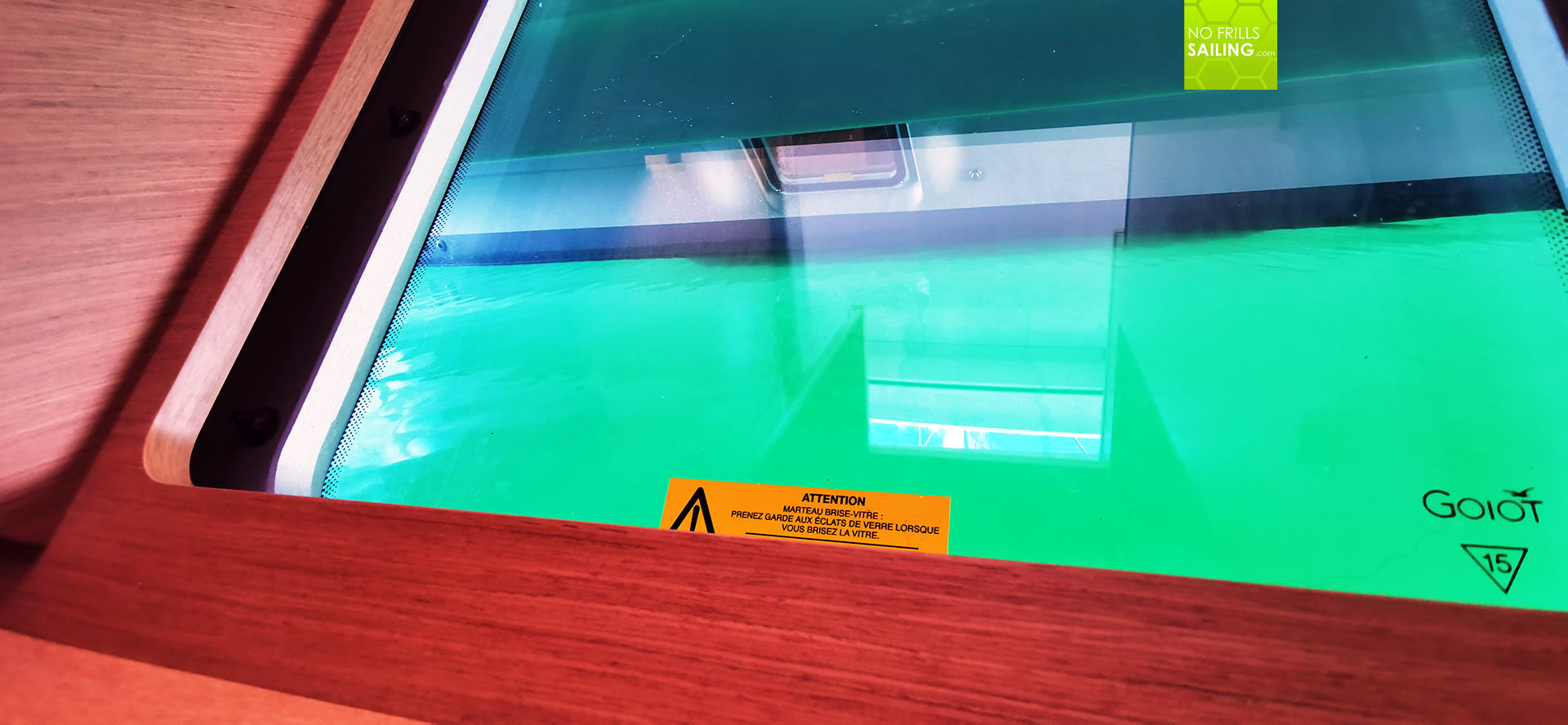
On the other hand, once over 15 degrees heeling (this is a guide value), the catamaran is lost. It will suddenly hit the tilting point and tip over. Once done, there is no safety net and no fallback, the capsize is imminent and cannot prevented anymore. Remember: A catamaran is very, very stable and safe in normal sailing conditions and even in heavy weather . But a skipper must respect under all circumstances the reefing threshold of his catamaran and reduce sails area accordingly. In this – at least that goes for my Excess 11 – this threshold seems very high and will nonetheless bear enough safety margin. For example, on the reefing chart it is recommended to put in the first reef in the main at 23 knots AWS. 23 knots! I felt it necessary to reef at 19-20 knots …
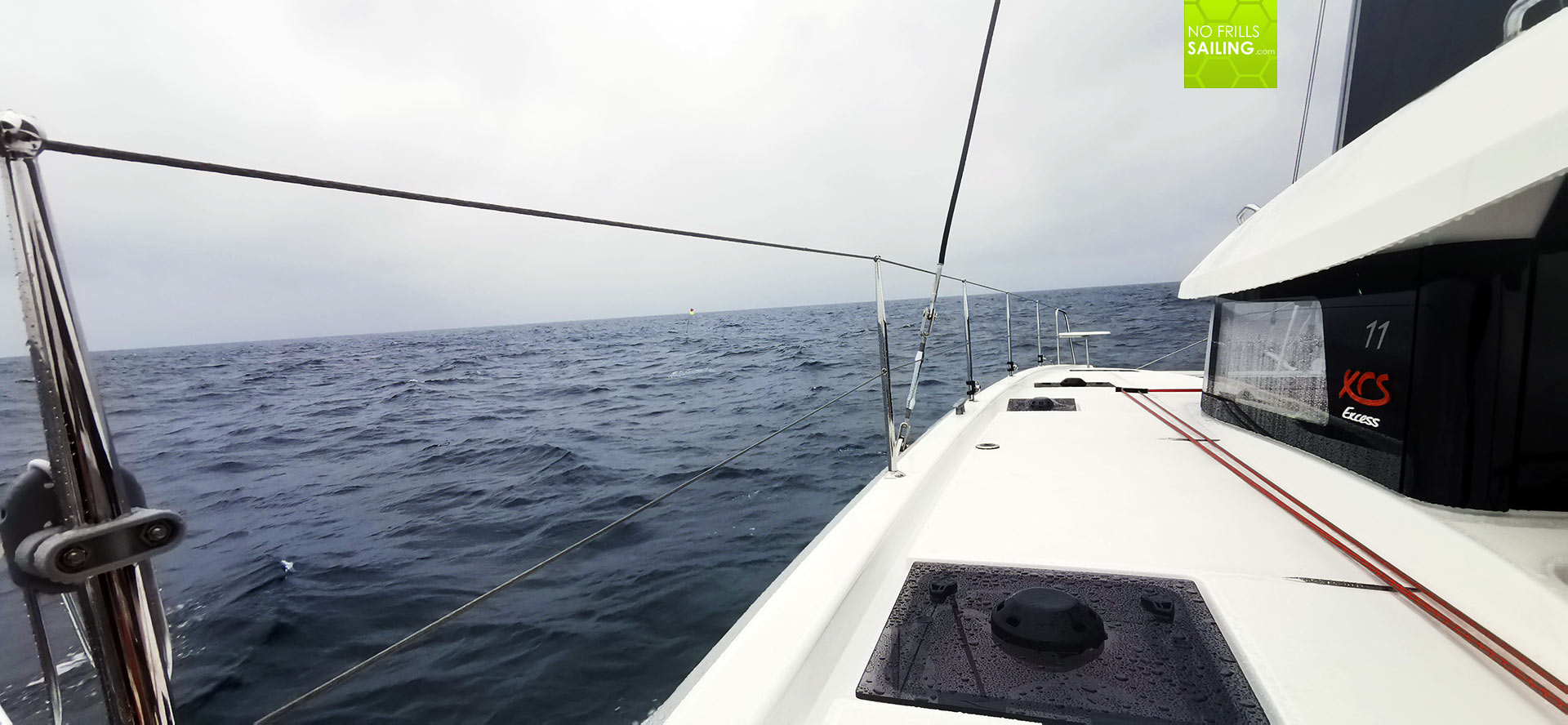
So, with this knowledge and my first couple of hundred miles of experience on a monohull I can reassure you, dearest readers, with peace of conscience: Under normal cruising circumstances, even in foul weather, you catamaran won´t tilt and is not unstable nor unsafe. It takes a load full of massive energy to capsize a catamaran or a an unusually incompetent skipper who dangerously ignores the code of conduct. Just in case: You now know how to escape – and don´t forget to activate the EPIRB . Be safe out there!
You might as well find interesting to read:
Safety concept for a boat.
Keel types in monohulls
All catamaran-related articles by clicking on this hashtag #excesscatamaran

Why Catamarans Capsize, A Scientific Explanation (For Beginners)
As an Amazon Associate, we earn from qualifying purchases. We may also earn commissions if you purchase products from other retailers after clicking on a link from our site.
When people see a catamaran, many think of capsizing, which has proven to be a way less common event than your average forum thread would lead you to believe. This article will use a scientific approach to look at the data available for stability incidents with catamarans.
This article is based on a study made by the UK government concerning recommendations for regulating catamarans. I have used that knowledge to discuss some of the common misunderstandings considering catamaran stability. Let’s get to the short answer!
A Catamaran will capsize when rotational forces overcome the stability of the boat. Capsizing can happen in two ways, either the ship overtakes a wave and sinks it bows into the next one, inducing something called pitch-poling. Or a breaking wave, with the same height as the boat’s length, hits the vessel’s side, making it roll over to its side(a.ka. flipping).
Are you like me and need to understand why? Read on!
What Does It Mean to Capsize?
In the context of boats, to capsize means to flip the boat upside down unintentionally.
On a small dingy, it is part of the sailing experience, and the boat can quickly be righted, but on a cruising cat, it can be the difference between life and death.
This can happen in numerous ways that will be discussed in great detail below. The most common is a combination of high seas, strong winds, and sailor error.
Not only is it dangerous to be in the middle of the sea stuck on what has now become a very expensive chunk of plastic, but the act of capsizing is also hazardous. Depending on where you are, inside, outside, or in one of the hulls, you may face the risk of getting thrown overboard, stuck in a hull upside down in the dark, or getting hurt by flying objects.
Much of the discussion around capsizing and what to do after it has happened is theoretical. In this article, I will show you the science behind catamaran stability and how that interacts with the power of the sea.
Why Does a Catamaran Capsize?
Catamaran stability can sometimes be a little tricky to understand. To get us off to a good start, here is some terminology that will be useful;
- Wind heeling moment is the effect wind has on the rotational(heeling) movement of the boat.
- Apparent wind angle is the angle of the wind when the boat is moving; this can differ from true wind, which is measured in a fixed position.
The study reaches a couple of conclusions, some of which are of interest to this discussion.
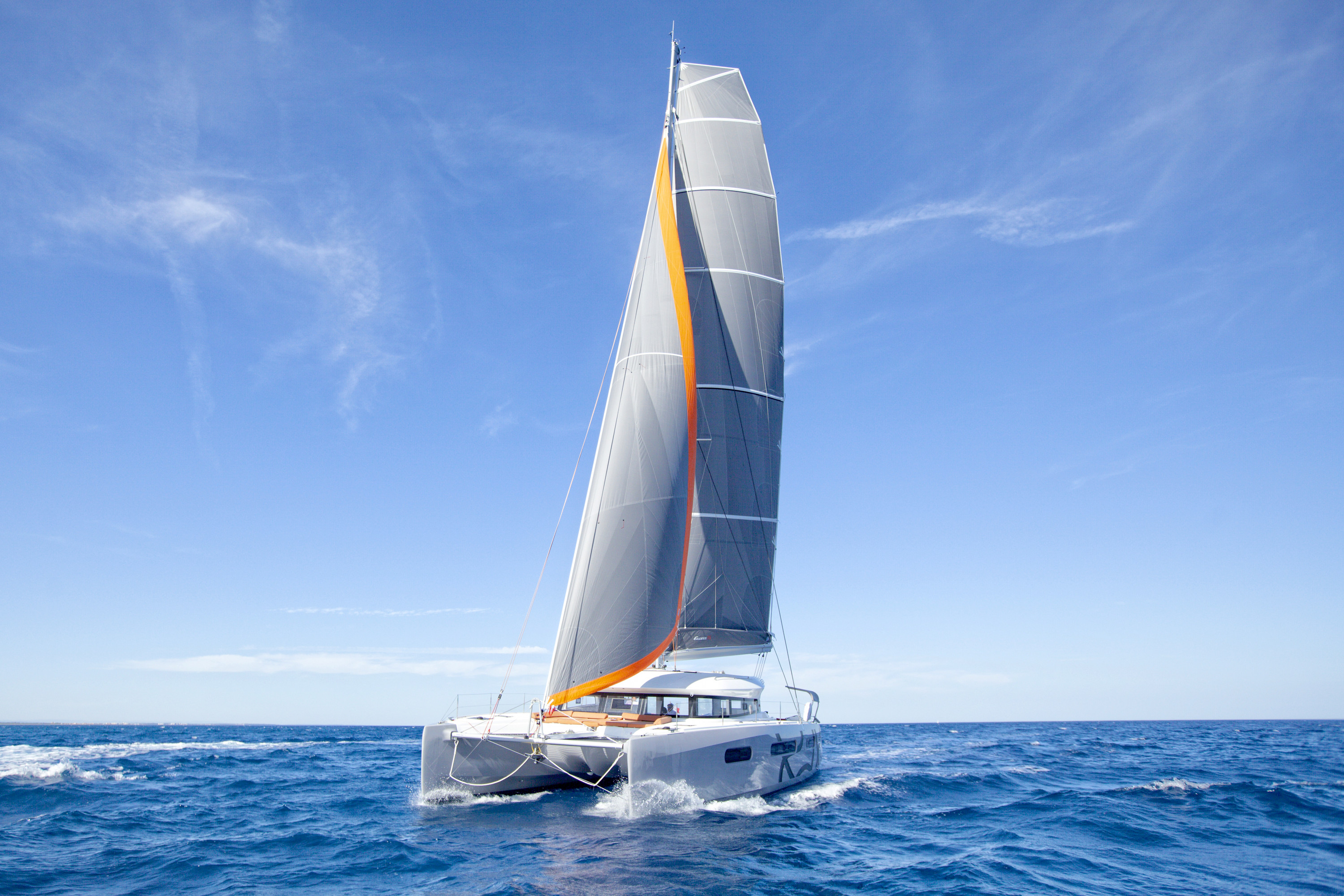
Heeling Is Greatly Dependent on Apparent Wind Angle and Sheeting of the Sails
This means that a catamaran (or any other sailboat, for that matter) will have a greater rotational force if the sails are sheeted in hard. This is because the wind gets “caught” in the sails, and the forces act directly on the sails, mast, standing rigging, and onto the hulls.
If, instead, the sails were loosened or “sloppy,” the amount of wind “caught” would be less, and therefore, more wind would be able to pass around the sails, thus decreasing the heel.
When it comes to apparent wind angle, the study shows that the forces are most significant when the wind is forward of the beam. This is primarily due to the aerodynamic effectiveness decreases aft of the beam.
Large Waves From the Side or Aft
Large waves are always a factor con safety at sea; they can be divided into breaking waves, waves whose amplitude (basically when waves get so big that they start coming apart(breaking) reach a threshold where the shape of the waves suddenly changes.
The other category is non-breaking waves or rolly waves. These are more gentle and cannot change shape in a violent and uncontrolled manner.
The study concludes that (1)catamarans have less roll response than monohulls during non-breaking waves, which means a catamaran will generally follow the motion and wave shape as it goes up and down it in a predictable manner, and that (2) this behavior shows no indications of being dangerous.
A monohull will instead rock from side to side and show a pendulum-like behavior.
On the other hand, breaking waves pose a real threat and are something to be aware of if traveling on a smaller catamaran. The test showed that a sufficient beam-to-wave ratio is needed to avoid capsizing.
A common beam-to-length ratio is 50%; that is, the length of the boat is at least double the size of its width.
Together with wind forces, breaking waves seem to be the most significant factor affecting the risk of capsizing.
Breaking waves with a height equivalent to the beam of a catamaran, half the beam of a trimaran may be sufficient to cause a capsize. Smaller or narrower yachts are, therefore, more vulnerable.
What makes breaking waves dangerous is their ability to bring the boat past its tipping point (or range of stability); much of this is due to the steepness of the wave. A 30ft non-breaking wave will act as a rolling hill in the English countryside, while a 15ft breaking wave is more of a black slope in a French ski resort.
The closer a boat comes to its tipping point, the less energy is needed to move past it. This is why the combination of factors is essential, large breaking waves, high apparent wind forward of the beam, and a minor error from the cockpit, and disaster is around the corner.
Effect of Keels (Daggerboards, Centerboards)
When a catamaran is hit with a breaking wave from its side, one factor that reduces rotational forces is the ability to move sideways with the wave, in other words, to slide sideways.
Usually, this is not wanted since it reduces the cat’s ability to go windward; this issue is sometimes addressed by adding mini keels, dagger, or centerboards.
The issue with keels is that the crew cannot withdraw them into the hull to reduce drag; this means that they can become a security issue when hit by large breaking waves to the side. It will hinder the sideways sliding actions and increase the risk of capsizing, as the study indicates.
Here’s an article I wrote comparing daggerboards to centerboards .
Placement of Weight (Vertical Center of Gravity, Vcg)
We have already discussed the importance of having a big enough beam to create sufficient stability. Moving the hulls wider apart will lower the center of gravity (or center of weight) and increase stability; this is true if all other factors are the same.
I f we move the hulls closer to each other, the catamaran becomes narrower, and the center of gravity will move upwards. What happens then? You guessed it, removing the wide base makes it less stable and more prone to heeling.
The same effect can be had by moving weight on the ship vertically (VGC); lower = more stable, and vice versa (a monohull moves it below the surface using a heavy keel).
Pitchpoling (Frontflip)
Pitchpoling is when a catamaran sails with the winds and waves, and the speed of the boat increases to levels above the wave speed. When this happens, there is a risk that the catamaran will semi-surf down the wave and hit the next one. This will slow the boat down, increase apparent wind, and create a rotational force that will make the boat invert if big enough.
Pitchpoling can happen in two ways, symmetrically or asymmetrically. According to the testing in the study, it is more common for one of the bows to dig down into the water and then diagonally flip.
Factors That Affect Pitchpoling
To increase the rotational forces needed for pitchpoling to happen, the center of weighing needs to be shifted aft. This means that a catamaran that is improperly balanced, for example, the bows filled with gear instead of empty, will increase the risk of burying the bows and potentially flipping over. More on weigh issues below!
Another way to offset your balance is to allow water inside the bows; this can happen after repeated slamming of waves onto the hatches. Once filled up, they can hold tons of water and be a severe threat due to buoyancy loss and shift in the center of weight.
Surfing a wave is cool, but it is much safer to lower the speed through reefing early; this reduction in speed makes it less likely to sail into the next wave or trough and risk pitchpoling.
If the boat speed is still too high, the next option is to deploy a drogue that will break the boat and add some directional stability. If this, for some reason is not possible, the study suggests that the vessel should hit the waves head-on.
What is a drogue?
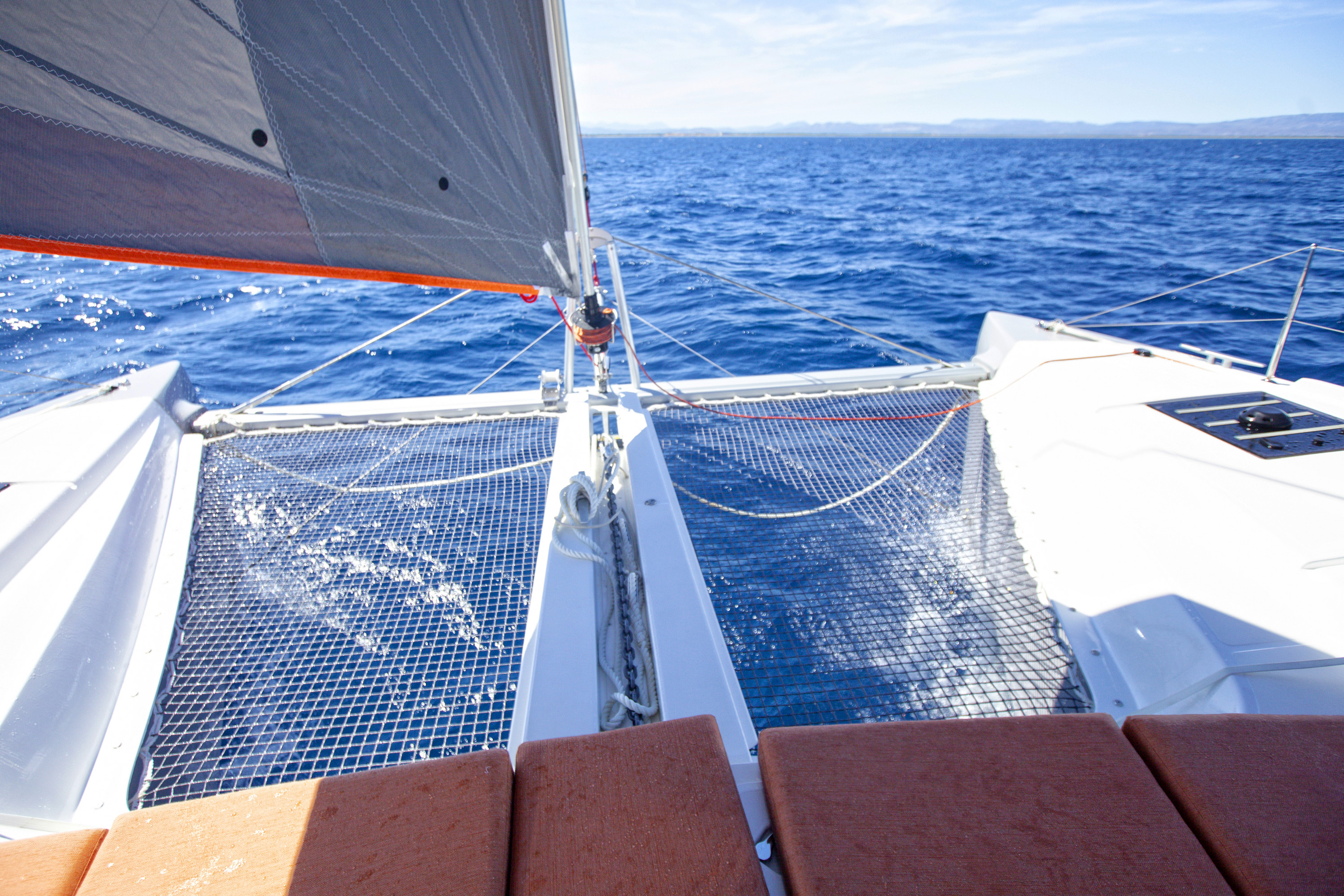
Trampolines
We have already discussed the issue of burying the bows; the effect is massively increased with a solid deck that almost makes the boat into a spoon(a terrible thing if you do want thousands of kilos of water onboard). A better way to dissipate water is with trampolines that lets the water through in a much faster way, like eating soup with a fork.
The effect of having trampolines is twofold; firstly, it will reduce the time the bows are submerged. Secondly, it will decrease the weight of the water on top of the bows and, therefore, how deep the bows will dive.
What is a trampoline on a catamaran?
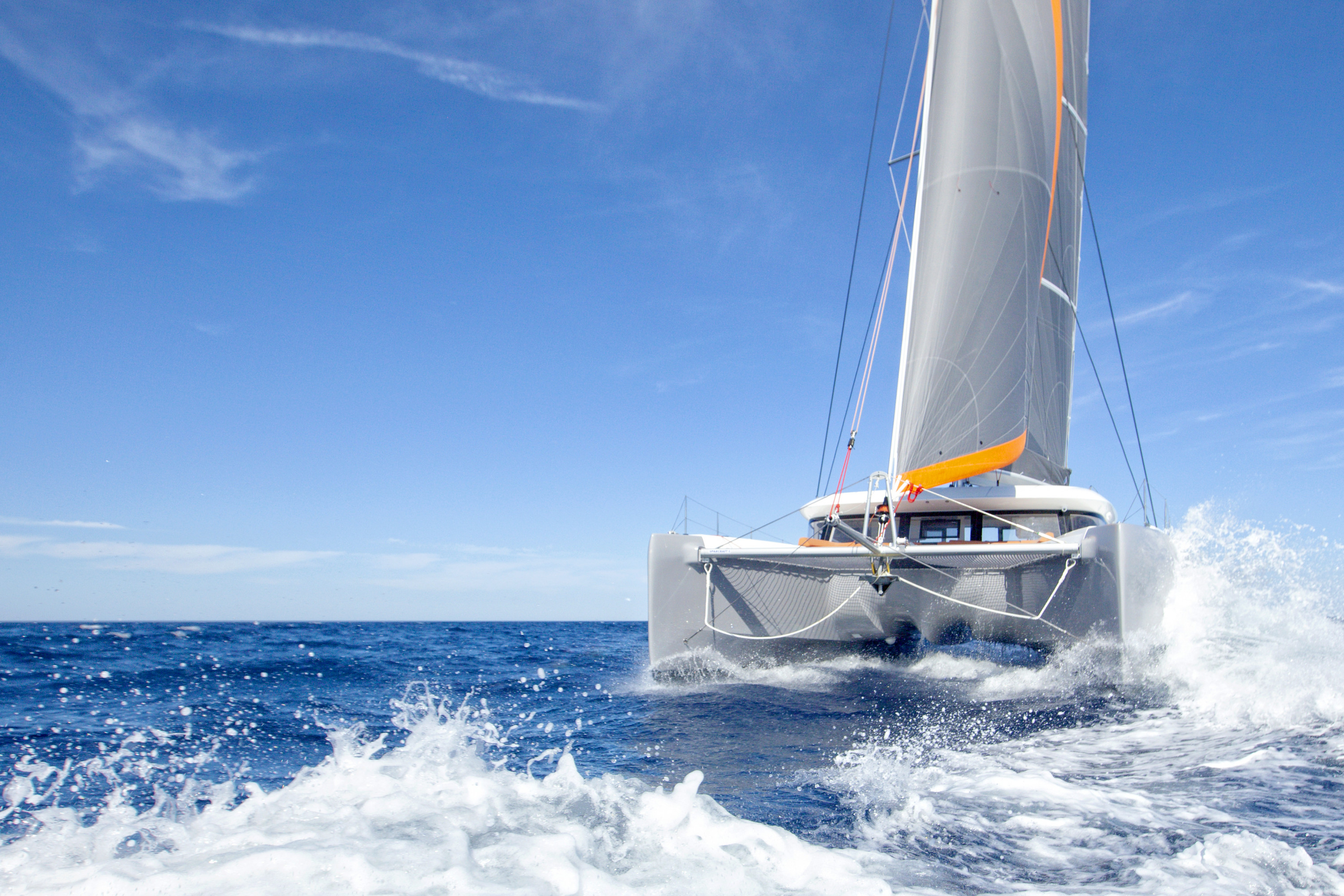
Hull Shape and Freeboard
There is a discussion that too narrow hulls can increase pitchpoling risk since the hulls might easier dive into the water. I understand the logic, but I am unavailable to find any data to support that claim.
You could also make the claim that wider hulls would increase the braking effect and therefore add to rotational forces. As said, we need more data on this!
Freeboard is the distance between the water and the deck; the bigger this is, the less chance of burying the bows, and vice versa. Same here, It makes sense logically, but there are little data to understand what is enough freeboard.
Real Cases of Catamarans Capsizing
Some news sites have reported on catamarans flipping in different parts of the world. Unfortunately, there is not much data, so drawing well-grounded conclusions is hard.
The previously named study mentions only one report of a catamaran capsizing due to waves hitting its side precisely at the moment of breaking. The cat was 9 m long, and the owner had modified the boat by adding keels.
The study consists of a data set of over 120 incidents reported, of which only 33 are catamarans showing that catamaran capsizing is something very uncommon.
The reason for a catamaran sailboat capsizes;
- 28% Gust of wind
- 16% wave and wind
- 12% Pitchpoled
- 4% Braking Wave
It is also worth noting that most catamaran incidents happened in the range between 6-9 of wind force(Beaufort). Most incidents were on boats smaller than 11m.
News reporting and other articles
While researching this piece, I came across several relevant news articles regarding incidents and a few well-written case studies. I have incorporated these in this article as a point of discussion rather than factual claims. At the bottom of this page, you’ll find the links if you want to read the articles in full length.
2019 Australia, 39ft catamaran capsizes. The daggerboards can be seen and appear to be fully extended; considering the discussion above with keels, daggerboards will decrease the possibility of sideways movement even further. This is also indicated in the study.
There is a discussion on whether or not to leave one daggerboard deployed and one raised, but once again, the discussions of which one and when vary. And I have not been able to find any scientific support for these claims.
2010 Tonga, 57 ft Atlantic catamaran. The crew describes the situation to be very gusty, with winds up to 60kts! A full report on this incident would be very interesting and could really add to the knowledge database. 57ft is a huge ship, but a boat of this size also has a lot of sail area, and during this incident, the autopilot was steering the ship under reefed sails.
A ship of this size should be wide enough to be able to handle some very big waves, and it would be interesting to see whether the crew stuck to the wind charts. I think there is a lesson to be taught here on autopilot and being on the lookout for bad weather.
You should definitely be behind the helm if there is a squall coming so that you are ready to compensate for a change in wind pattern and quickly put in another reef if the initial assessment was wrong.
Chris White, the designer of Atlantic Catamarans shares his thought on this incident;
To summarize: 1) Neither captain thought capsize was even a possibility until way too late 2) Both boats were under autopilot, which had the helm all the way through the capsize 3) The main sheet was never eased or released Chris White of Chriswhitedesigns.com
Mythbusting!
The first part of this article takes its trustworthiness from a scientific study backed by the United Kingdom government; in this next section, I will use that knowledge to address some common myths and misconceptions.
A Charter Is Harder to Flip Than a Performance Cat.
As far as I understand, this argument is based on the following premises; the charter boat is heavier than the racing cat; therefore, it is more stable . As we have come to understand from above, it is a matter of total kilograms and where it is located.
A low and centered center of gravity means better stability. A cruising cat can easily be weighed in the wrong places due to all the extra gear that is usually brought along, such as generators or extra food for a long passage.
Moving the center of weight forward increases pitchpoling risk, and moving the weight up makes it vulnerable to breaching by breaking waves.
There is no need to believe a cruising cat is safer in that aspect inherently. Another common argument I hear is that the rigging would never be able to flip a fully loaded cruising cat since the standing rigging will break before lifting a hull.
What is standing and running rigging?
In theory, this might be true (I don’t have the data available), but in reality, this is certainly not the case; the data in the study clearly shows that catamarans can flip with their rigging intact.
Taking the combined factors of wind, waves, and the keels’ braking effect, there is not necessarily much force needed on the rigging for the boat to capsize. Yes (once again, in theory), a lighter catamaran will be easier to flip under some circumstances, but I would then argue that is more of a sailor error than due to the boat’s construction or weight.
Capsizing a Catamaran vs. Monohull
These two types of boats work in very different ways when it comes to stability; one significant factor is the ability of self-righting of a monohull due to its large and heavy keel.
On the other hand, the catamaran will stay bottom-up and mast down until intentionally righted by another ship.
Once the monohull starts leaning to its side, it will start to dissipate the pushing force that the wind acts upon the sails. This is an automatic way for a monohull not to become overpowered.
This lack of feedback (no or little heeling) on a catamaran means the sailor needs to rely on wind speed charts to tell him or her when to reef. If these charts are not followed, chances are the cat will get overpowered.
Another interesting aspect is that even though a catamaran is flipped upside down, it will still float due to the massive air compartments and low weight, something that a monohull will not. It will even stay afloat if there is a hole in one of the hulls.
What are the differences between monohulls and catamarans?
Catamarans Capsize More Often Than Monohulls
This is a wild debate in many online forums; some argue that it is less safe since it doesn’t have a keel, and some argue that I would rather be floating atop my inverted catamaran than alone in the middle of the ocean with a sunken monohull (while obviously totally missing the point of the discussion).
The truth is that there are no real data to back these claims, at least not that I am aware of. I have tried the insurance companies, but there doesn’t seem to be any big data available, only stories and myths.
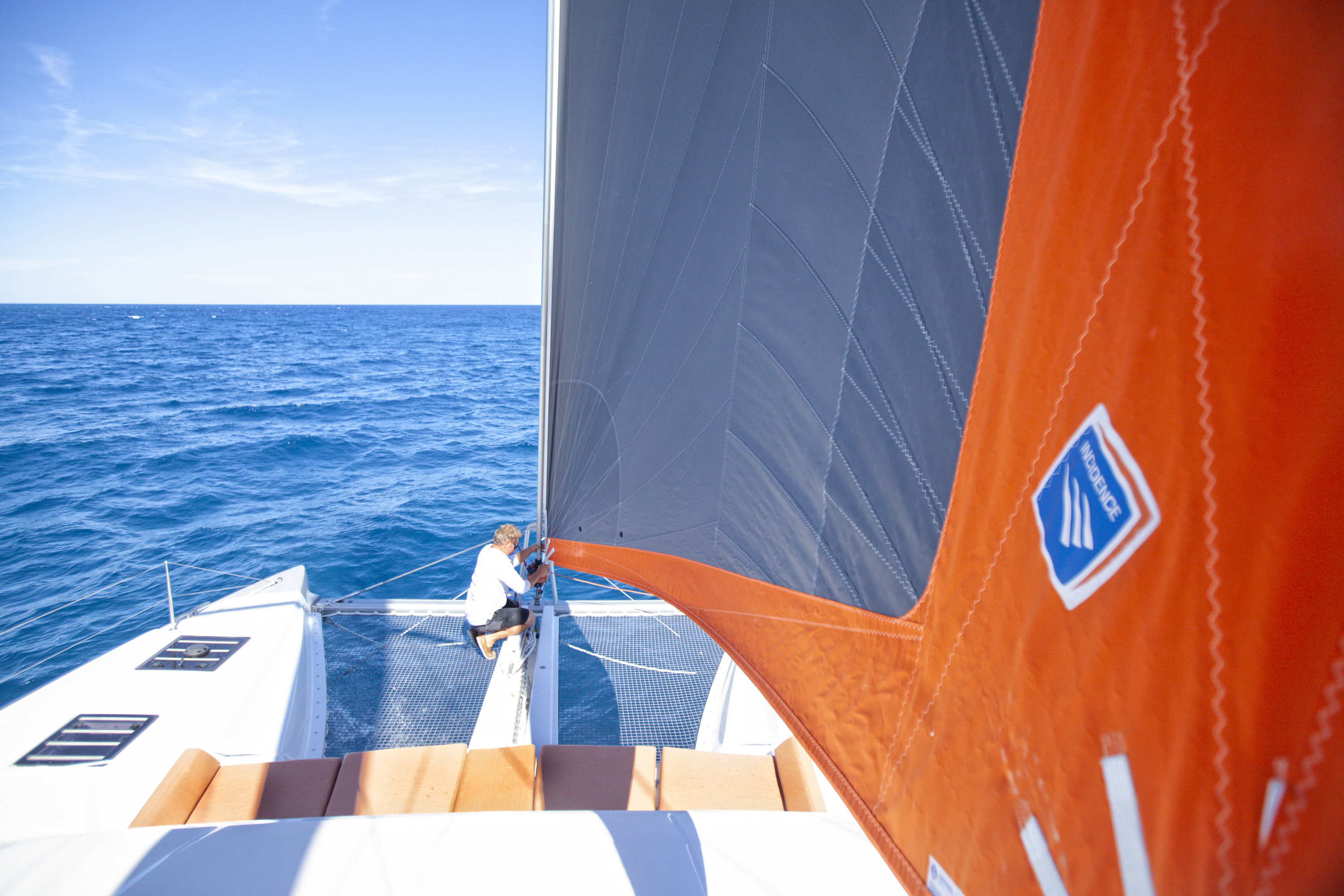
The Skills of the Crew
When trying to avoid a catastrophe like a capsize, the most critical aspect is avoiding putting yourself in a bad spot, sailing above your skillset, and more winds and waves than the boat can handle.
This is evident, of course, but it is worth mentioning in detail what this actually means; planning to avoid bad weather and learning how to plan a sail safely and not rush is one of the best safety skills you can have. Once you’re out on the water, surprises will always come your way, so when that happens, use the radar to try to stay away and outrun the weather.
Outrun, you say, no boat is that fast. Well, the idea is to outrun it at an angle, not outrun it like Indiana Jones outruns a rolling stone. At least try to hit the part of the squall or bad weather with lower wind speeds.
Reef Often, Reef Early
Considering the data above, that most boats capsize during gusts of wind, there is a need to respect that data and make that old saying more accurate than ever. Reef early reef often. Make sure you turn off your autopilot; if there is a squall coming, you better be behind the helm to control your ship. Autopilot is stupid, your not!
Also, remember that reefing not automatically reduces speed!
As mentioned above, reducing sail area doesn’t necessarily reduce speed, but it reduces the area where the wind’s pushing can turn into rotational forces. Keep your speed so that you do not overtake the weaves and risk burying the bows.

Keels, Daggerboards, Centerboards
Before you decide on your standing operating procedures for heavy weather, make sure that you understand how your daggerboards will affect the boat handling. The research suggests that you might want to raise them, but make sure you understand why you do it and when.
Using fully deployed daggerboards while getting hit by a breaking wave to the side will increase the rotational force making a capsize more likely.
Heavy Weather Strategies
The boat’s performance is one thing; the crew’s skills are another; make sure you practice those skills and read up on the actual data that exists instead of reading too many forums and listening to know-it-alls. Ensure that your drills are based on science and not someone’s best guess! I encourage you to read the full article, it will be linked below, and go out there and look for more high-quality content.
- https://catamaranguru.com/top-6-characteristics-of-a-good-catamaran/
- http://www.wumtia.soton.ac.uk/sites/default/files/1441_merged.pdf
- https://shuttleworthdesign.com/NESTalk.html
- https://www.chriswhitedesigns.com/25-news/112-what-we-can-learn-from-anna-s-capsize
- https://www.researchgate.net/publication/250304001_Model_Tests_To_Study_Capsize_and_Stability_of_Sailing_Multihulls
News articles
- 2020 https://voilesetvoiliers.ouest-france.fr/securite-en-mer/disparition-en-mer/le-catamaran-hallucine-de-regis-guillemot-chavire-au-large-de-vigo-un-mort-trois-rescapes-491bc45c-237e-11eb-97e1-64af5fb563fa
- 2019 https://www.news.com.au/national/nsw-act/news/three-dead-two-rescued-after-catamaran-capsized-in-newcastle/news-story/8f94be3543c41368a4fd83b9b661033b
- 2010 https://www.chriswhitedesigns.com/25-news/112-what-we-can-learn-from-anna-s-capsize
- https://www.sailingtoday.co.uk/uncategorized/bullimores-33m-catamaran-capsized/
Owner of CatamaranFreedom.com. A minimalist that has lived in a caravan in Sweden, 35ft Monohull in the Bahamas, and right now in his self-built Van. He just started the next adventure, to circumnavigate the world on a Catamaran!
2 thoughts on “ Why Catamarans Capsize, A Scientific Explanation (For Beginners) ”
Hi , Thanks for the advice, very good to know. Look forward to having a look at links. Best of luck on the trip, have fun. Mike
Thanks, Mike! Let me know if you have any other questions 🙂
Leave a Reply Cancel reply
Your email address will not be published. Required fields are marked *
Save my name and email in this browser for the next time I comment.
Recent Posts
Must-Have Boat Gear for Catamaran Sailors!
Sailing is probably the most gear-intensive activity I've ever done; there are so many decisions to be made about what gear to buy now, for tomorrow, and what to definitely never buy. The gear on...
6 Best Trailerable Trimarans For Bluewater and Coastal Sailing
Having a boat costs a lot of money, even when you are not using it, marina fees, etc. And once it is in the water most sailors never go very far from their "home marina" and sailing will be somewhat...
Better Sailing
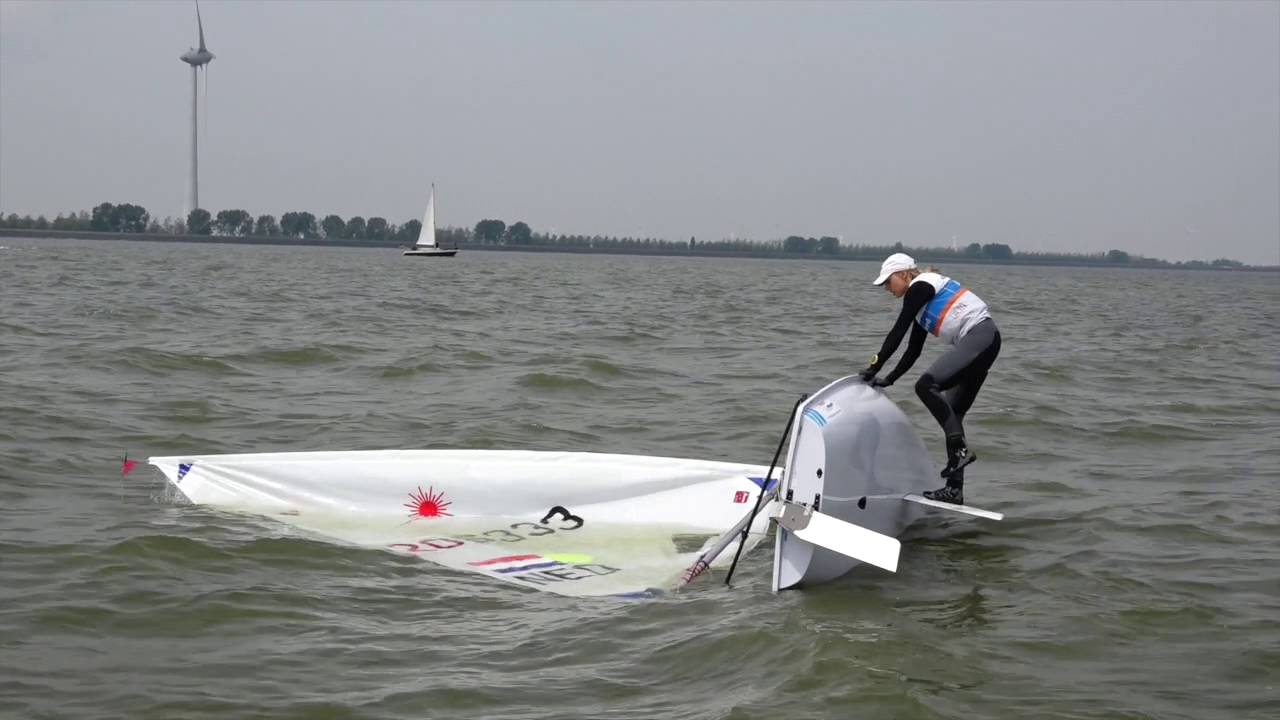
How to Right a Capsized Sailboat
Capsize is the term used when a Sailboat is tilted at a 90º angle or turned over in the water. It has something to do with the movement of the crew weight or excess weight concentrated on the wrong side of the boat. It can also be due to too much power in the Sail.
In this section, learn how to avoid capsizing or deal with a small capsized sailing Dinghy :
How to Avoid Capsizing
- Familiarize yourself. Keep in mind that Capsizing is very common when sailing a small boat. This fact can make you prepared. Know the different situations where Capsizing becomes inevitable. Getting familiar with the causes can help you in avoiding them as you go afloat. It is wise to know the things you need to do if the boat capsizes. In protected waters with good conditions, practice dealing with a capsized boat. Get familiar with the steps to do to make the boat upright again. Make sure that you wear a Life Jacket. It will be better if you have someone on another boat to give assistance when necessary.
- Know your limitations. Sail within the limits of your skills and ability to respond to situations. Knowing how to make the boat upright when sailing a Dinghy or small boat is very crucial. If you do not know how to deal with a capsized boat, sail on a more stable one. Small Keelboats and other types of Dinghies are more stable and less likely to capsize. For obvious reasons, do not go afloat if the conditions are not favorable for Dinghy Sailing.
- Know how to reef a Dinghy. A Dinghy becomes easier to handle in strong Winds if it is reefed. Reefing, or reducing the Sail Area, is an important skill to learn. Knowing how to properly adjust the Sail area of a Dinghy while on the water can help you in keeping it upright.
- When Sailing Downwind Place crew weight astern and keep the boom down.
- When Sailing Upwind Place crew weight to windward. Slightly raise the Centerboard or Daggerboard to decrease the Heeling effect. Take control of the speed of the boat. It is more likely to capsize if it heels and slows down.
Knowing the causes of Capsizing will help you in avoiding it. In the event that your boat capsizes, do not get embarrassed. Having a capsized boat is not something to be ashamed of. Many sailors have their own share of experiences in getting their Dinghy capsized. The important thing is that you learn from the experience.
Methods of Righting a Capsized Boat
Dealing with a Capsized boat generally depends on the size of the Sailboat and on what circumstances you are sailing in. Wind and wave conditions at that particular time should be taken into consideration.
Here are some Techniques in Righting a Capsized Boat:
- Release the mainsheet and tiller and climb towards the opposite side.
- Climb over the top gunwale (top edge of the side of the Hull). Step over the sidedeck to reach the Daggerboard.
- Stand on the part of the Daggerboard nearest to the Hull and hold the gunwale.
- Pull the boat upright. Climb back to the boat as soon as it is upright again.
- Scoop Method The heavier person rights the boat by standing on the part of the Centerboard nearest to the Hull to pull the boat upright. The other person is scooped aboard. His weight will prevent the boat from another Capsizing once it is upright. In this method, release the mainsheet and jib sheets in order for the Mainsail to wave loosely when the boat is upright again.
- Walkover Method As the boat capsizes, you and your crew member should climb over the opposite side of the boat to reach the Centerboard. Climb back into the boat as soon as it is righted.
- Traditional Method Turn the boat in such a way that the Mast is downwind or the bow is pointed into the Wind. The first person should stand on the Centerboard, while the second crew member keeps the boat into the Wind. From the Stern, the first person boards the boat and helps the other crew member onboard.
- Righting an Inverted Boat The buoyancy distributed on the bottom and sides of the Hull makes a lot of Dinghies more at risk to turtle (turn completely upside down). In this situation, the Centerboard will likely to slip back into its case. When this happens, stand on the opposite gunwale and pull on a jib sheet or fixed righting line and lean out. Bring the boat to its horizontal or capsized position. Do the suitable Righting Technique to make the boat upright.
In recovering a Capsized boat, ensure that you and your crew (if you are sailing with another person) are safe at all times. Wear a Life Jacket afloat and remember to stay with or near the boat when it capsizes.
How to Right a Capsized Sailboat – Conclusion
Do not be embarrassed if your boat capsizes. In general, getting wet because your boat capsized is both a learning and fun experience. This is actually a good way to teach you several important skills in boat handling and techniques on how to deal with different situations.
Peter is the editor of Better Sailing. He has sailed for countless hours and has maintained his own boats and sailboats for years. After years of trial and error, he decided to start this website to share the knowledge.
Related Posts

Atlantic vs Pacific: Which is More Dangerous for Sailing?

Why Do Sailboats Lean?

How Does a Boat Sail Upwind? Unveiling the Mechanics of Against the Wind Sailing

How Does Sailing Work? The Physics of Sailing
- Buyer's Guide
- Destinations
- Maintenance
- Sailing Info
Hit enter to search or ESC to close.
Murrays Sports
- Wing Foiling
- Kiteboarding

What can we help you with today?
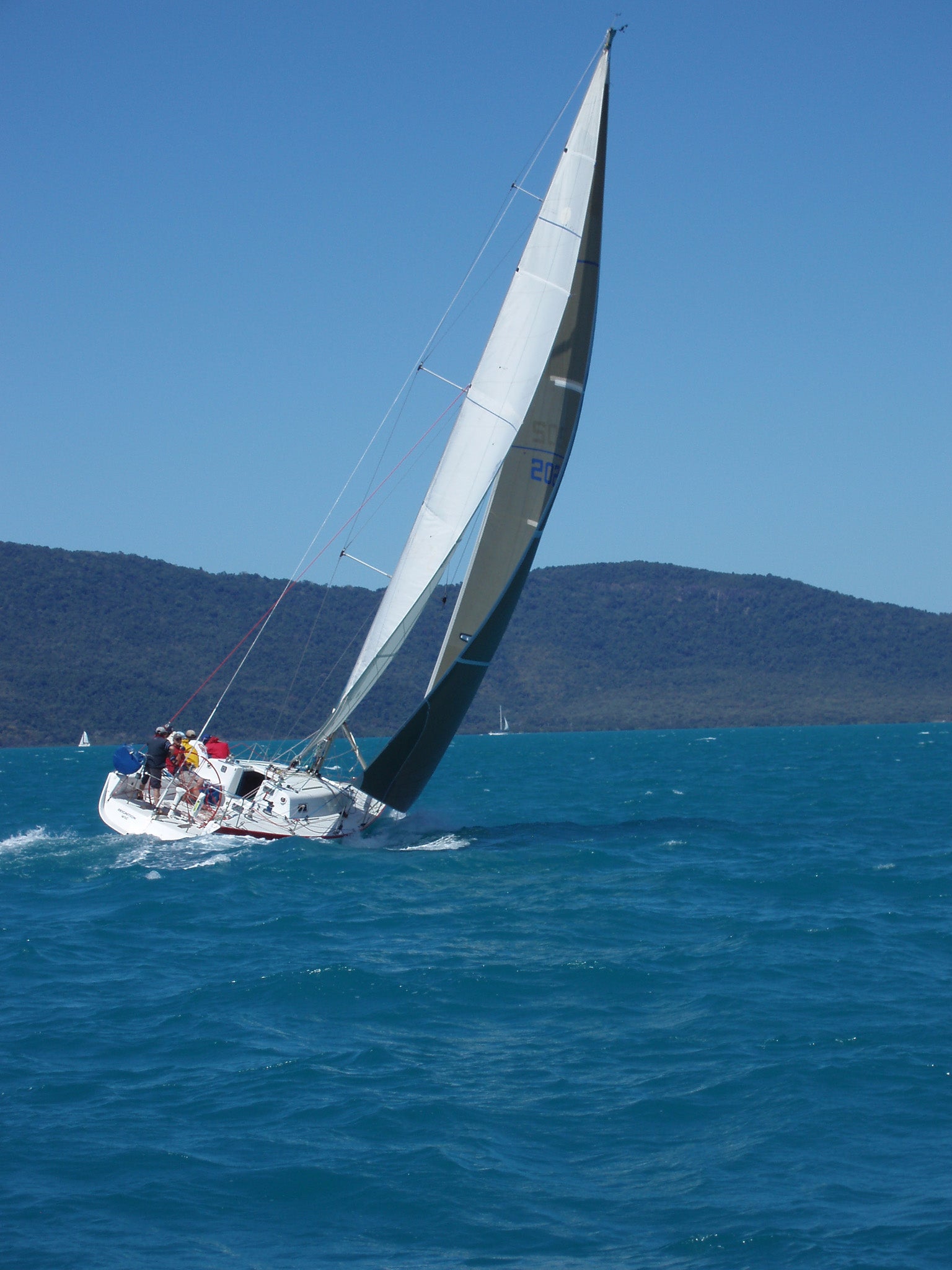
- EXPLORE Random Article
How to Right a Capsized Dinghy
Last Updated: June 9, 2022 References
wikiHow is a “wiki,” similar to Wikipedia, which means that many of our articles are co-written by multiple authors. To create this article, 28 people, some anonymous, worked to edit and improve it over time. This article has been viewed 43,152 times.
How to recover a dinghy after it's capsized. For clarity, mentions of the daggerboard here also apply for a centerboard where applicable. Once you realise that a capsize is imminent, it is very important that you uncleat the main sheet and jib sheet (where applicable).
Half inversion (boat on side)

Total inversion / "Turtle" (dinghy completely upside down)
This only occurs when the crew isn't able to pull on the daggerboard early enough after the capsize. The weight of the mast pulls the boat upside down. [2] X Research source

Dry capsizing
An advanced technique where you stay out the water after a capsize, and recover without getting wet. [4] X Research source A quick recovery used frequently in dinghy racing.

Scoop capsize
Another advanced technique where one person sits inside the boat while it's on its side and the others recover the boat. Once the boat is vertical again, there is already someone in it to help the others aboard. [5] X Research source
This can be dangerous if the boat turtles and you become trapped underneath. Don't try this unless you know exactly what you're doing. If there is ANY risk that the weight of those recovering the boat is not sufficient to guarantee that the boat will at least stay on its side, don't attempt this.
(The boat has to be on it's side to begin this procedure, and there must be at least two people in the boat - one of them must be capable of recovering the boat alone)

Strong Wind
- When recovering in strong winds, it is important that you only attempt to right the boat when the boat's daggerboard is on the Windward side , [6] X Research source or else the boat will easily angle too far and capsize on top of you.
- The most simple technique to recover a dinghy if it has capsized to windward, as long as you're not in shallow waters is to let the boat turn completely upside down then recover to the windward side (you can go either way once its completely upside down).
Community Q&A
Strong Wind - Mast to windward
There is however, an advanced way of recovering a half inverted dinghy in strong winds through use of a technique known as a "California roll" or "San Francisco roll". It is used when the mast is to windward of the hull, hence a probable immediate second capsize as soon as you right the boat to leeward. [7] X Research source This should only be used when the mast is to windward of the hull.
- Gradually begin to right the boat - cling onto the underside of the centerboard BEFORE the boat comes over by using leverage to your advantage - pulling yourself up nearer to the hull will stop the boat from coming over so quickly. Have your head nearer to the hull than your legs.
- Once upon the daggerboard, cling on TIGHTLY and gradually move your body weight back until the boat begins to right itself due to the strong wind forcing the sail over.
- Take a deep breath and hold on - do not let go of the daggerboard. The boat will flip through a full 180 degrees. You will now be on top of the daggerboard and can right the boat using standard procedures.
Note that this method is very advanced, and as a beginner, you shouldn't attempt it.
- If your boat is on its side and is about to turtle, jump on top of the sail and crawl away from the hull quickly. Generally however, the way to clear the boat is to move around to the stern (back). Thanks Helpful 0 Not Helpful 0
- When standing on the daggerboard - You obviously don't want to recover too early (before any crew is ready), so control the angle of the boat using the leverage the daggerboard allows you. Moving closer to the underside makes the boat turn completely upside down (not instant). Moving away on the daggerboard will recover it to its correct angle gradually. Thanks Helpful 0 Not Helpful 0
- If you're caught under the sail, you can usually push upwards above your head and you will create an airspace. Be aware though that the mast will want to come down and will try to force you under. However, in high performance boats, the sails can be made of plastics which will not allow you to use this technique as no air can be sucked through the sail. Thanks Helpful 0 Not Helpful 0
- As you go over, make sure you are not tangled on any ropes. You do not want to be caught under your boat. Thanks Helpful 6 Not Helpful 2
- Wear your life jacket/PFD at all times Thanks Helpful 4 Not Helpful 2
- Stay clear of the area between the hull and the boom, you could be forced under the boat. Thanks Helpful 1 Not Helpful 8
You Might Also Like

- ↑ https://scholarworks.sjsu.edu/cgi/viewcontent.cgi?article=1002&context=kins_pub
- ↑ http://www.working-the-sails.com/capsizing_and_man_overboard.html
- ↑ https://www.youtube.com/watch?v=zOBQjUEd_4s&t=1m40s
- ↑ https://www.cal-sailing.org/blogfrontpage/recent-blog-posts/entry/dry-capsize-on-a-quest
- ↑ https://www.discoverboating.com/resources/sailing-capsize-recovery-scoop-and-single-handed-methods
- ↑ https://www.youtube.com/watch?v=qP0bPCnv7QU
About this article
Did this article help you.

- About wikiHow
- Terms of Use
- Privacy Policy
- Do Not Sell or Share My Info
- Not Selling Info

IMAGES
VIDEO
COMMENTS
How to righting a turtled catamaranCapsizing and righting a catamaran is part of the basic skills every Cat sailor needs to have. Wind and waves, a leaking ...
Here we take a look at how to right a Hobie 16, the technique is similar for all small catamarans. Using 1st person perspective and live action commentary yo...
Location: Taiwan North coast, between the reef, the waves, and the strong current, it is challenging to sail there.
Catamarans invert easily and therefore your capsize drill needs to be rapid and well rehearsed. The method for righting a small catamaran differs from that for a bigger one. The smaller types, like the Dart for example, can be righted by immersing the bows or sterns until the hulls are vertical in the water.
The Traditional Method. Hence the name; this method is the most common way to recover a capsized boat. Begin by positioning the boat, so the mast is downwind (meaning the bow is pointed into the wind). Then, have one crewman stand on the centerboard (ideally, this crewman should be the heaviest of the bunch).
Catamaran capsize. When a catamaran capsizes, the crew need good technique in order to pull it up. This may include righting from a pitchpole or from total inversion. GOING OVER. A catamaran can capsize by being blown over sideways, or by driving the leeward bow into the water and "pitchpoling" (nosediving), as shown here.
Paper Tiger Catamaran International Association Page 2 of 2 Sailing a Paper Tiger - Righting after a capsize.doc Created: Dave Stumbles (1997) Checked: ? Revision 1 (6/11/2009) If you capsize as a result of nosediving, the boat may end up in any number of different positions. The above technique will normally work whenever the mast gets stuck.
Summary. A catamaran's stability is attributed to its center of gravity, its freeboard, and its pendulum-like behavior. However, despite its stability and speed, a catamaran can still capsize due to strong winds and capsizing waves. There are factors that can contribute to the likelihood of a capsize happening, such as wind speed, wave height ...
Capsize and Righting a Catamaran. Capsize and righting a catamaran can be challenging, but with knowledge and techniques, you can recover safely. When facing a catamaran capsize, follow these steps to ensure a successful recovery: 1. Stay calm and assess the situation. It's important to maintain a level-headed approach. 2.
Take another ring that has enough extra room in for your righting line to move freely through it. Tie a length of shock cord to it. Run the shock cord through the ring at the rear then straight forward and tie it off at the dolphin striker with enough tension that is holds the ring tight at the back of the boat.
I've only capsized once with my magnum wings, and the procedure was the same as without... I have a righting line connected at the dolphin striker that I throw over the appropriate hull, in the case of the wings, I just needed to make sure that the righting line didn't stress the wings out, you can't stand on the wings when turtled, due to the lack of support in that direction, and hanging on ...
How to help righting a capsized Catamaran out of a powerboat As a sailing instructor in a VDWS Watersports Center, you will be as well, using powerboats to t...
It seems that in most capsize situations, the boat remains largely intact. I am unsure as to the state of the rigging though. For the Leopard and the Anna, both boats seemed to be fine in the inverted position, though both were rescued soon after capsize. The Rose Noelle, on the other hand, was capsized for 118 days.
That is done (on my Excess catamaran) by unlocking two heasy lock bars and taking out the step of the frame. On the Excess the step has a secondary safety which is a click-in-bar holding it in place until removed by hand - so no fear that the step will hit you. Remember, when capsized, you will be working hand over head.
The cat was 9 m long, and the owner had modified the boat by adding keels. The study consists of a data set of over 120 incidents reported, of which only 33 are catamarans showing that catamaran capsizing is something very uncommon. The reason for a catamaran sailboat capsizes; 28% Gust of wind. 28% Wind.
Here are some Techniques in Righting a Capsized Boat: Release the mainsheet and tiller and climb towards the opposite side. Climb over the top gunwale (top edge of the side of the Hull). Step over the sidedeck to reach the Daggerboard. Stand on the part of the Daggerboard nearest to the Hull and hold the gunwale.
Seawise University capsized after being gutted by fire in 1972. Capsizing or keeling over occurs when a boat or ship is rolled on its side or further by wave action, instability or wind force beyond the angle of positive static stability or it is upside down in the water. The act of recovering a vessel from a capsize is called righting.Capsize may result from broaching, knockdown, loss of ...
☞ SUPPORT JOYRIDER TV⛵️Channel Membership https://www.youtube.com/channel/UC1lH...⛵️Patreon https://www.patreon.com/joseph_bennett ⛵️Getting a T-shirt ...
RIGHTING THE BOAT The trimaran setup of the Tandem Island makes it extremely stable and nearly impossible to capsize under most conditions. However, unexpected events do occur, so it is important to know how to "right" the boat if it were to turn upside down. Step 1. Remain calm and stay with the boat. Step 2. Because it is so stable with the
Our Cat Righting Big Bag System is a must for solo or lightweight crews to feel confident being able to right a capsized catamaran. It is powerful enough to right bigger cats without loosening shrouds. and is easy to install with no boat modification required. The bag attaches with hook and loop straps under the tramp for easy use and storage.
In a gusty wind of 4-5 Bft my NACRA 5.5 was capsized while solo sailing it. Good practice in righting the catamaran. Conclusion: hard job to do it yourself a...
Pull yourself over onto the underside (stand on the daggerboard). 4. When ready, step back on the daggerboard to begin to right the boat. 5. Once the boat begins to right itself due to its center of gravity, quickly pull yourself back over into the boat. Try to avoid touching the water.
This is a video to give you new guys an idea of what to do to right your Beach catamaran. There was a righting bag/water bag on board. I didn't use it becaus...